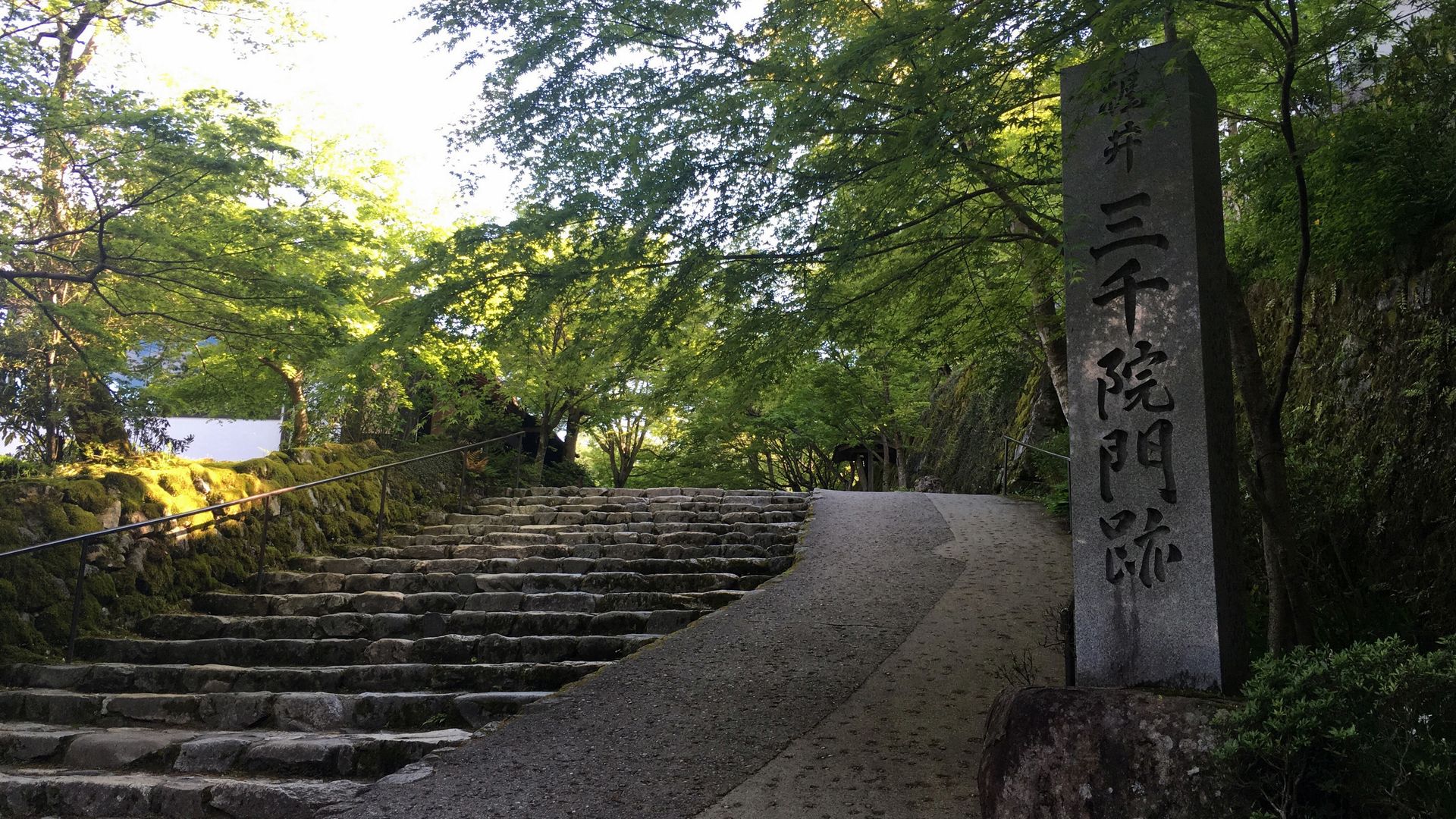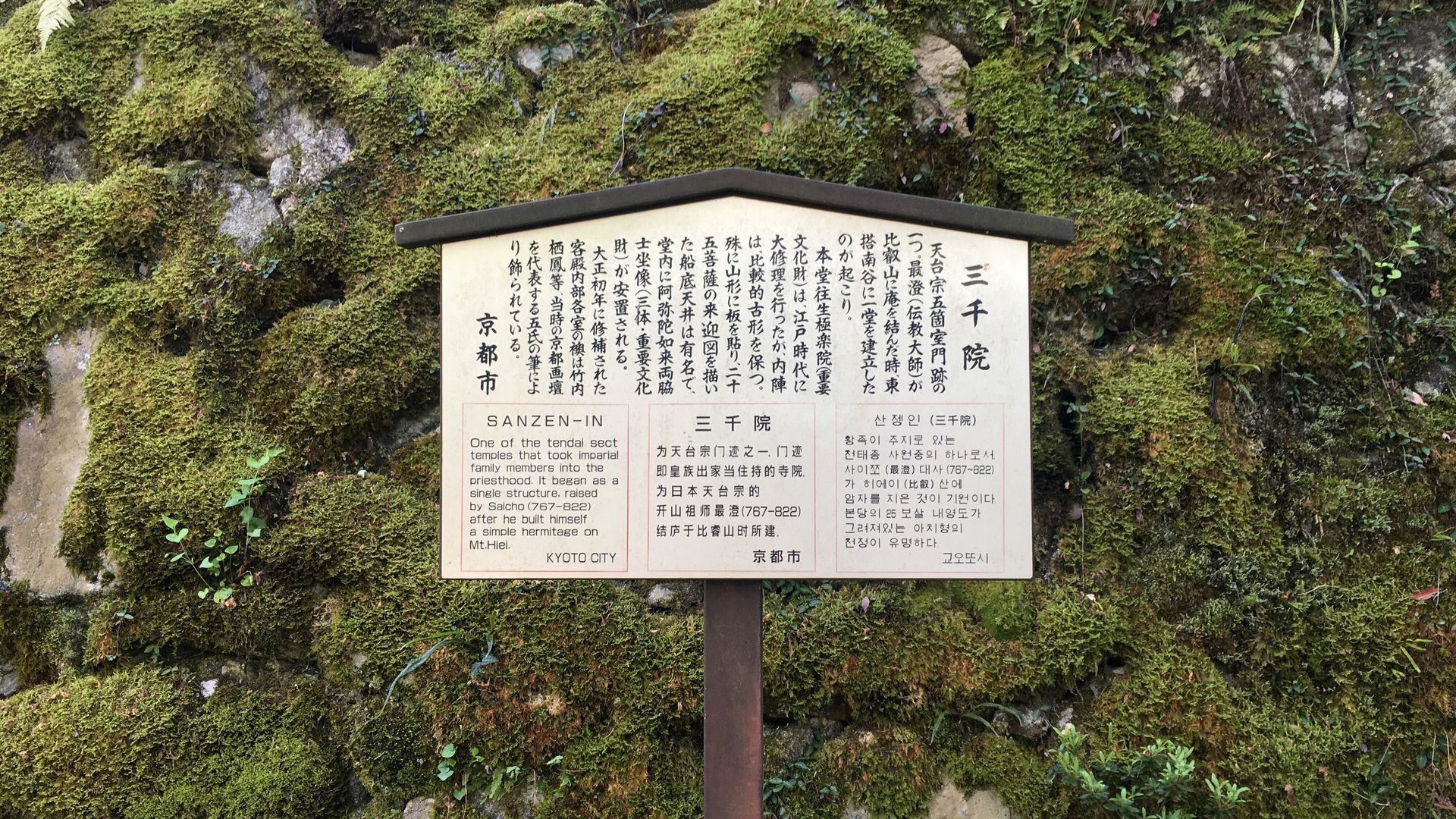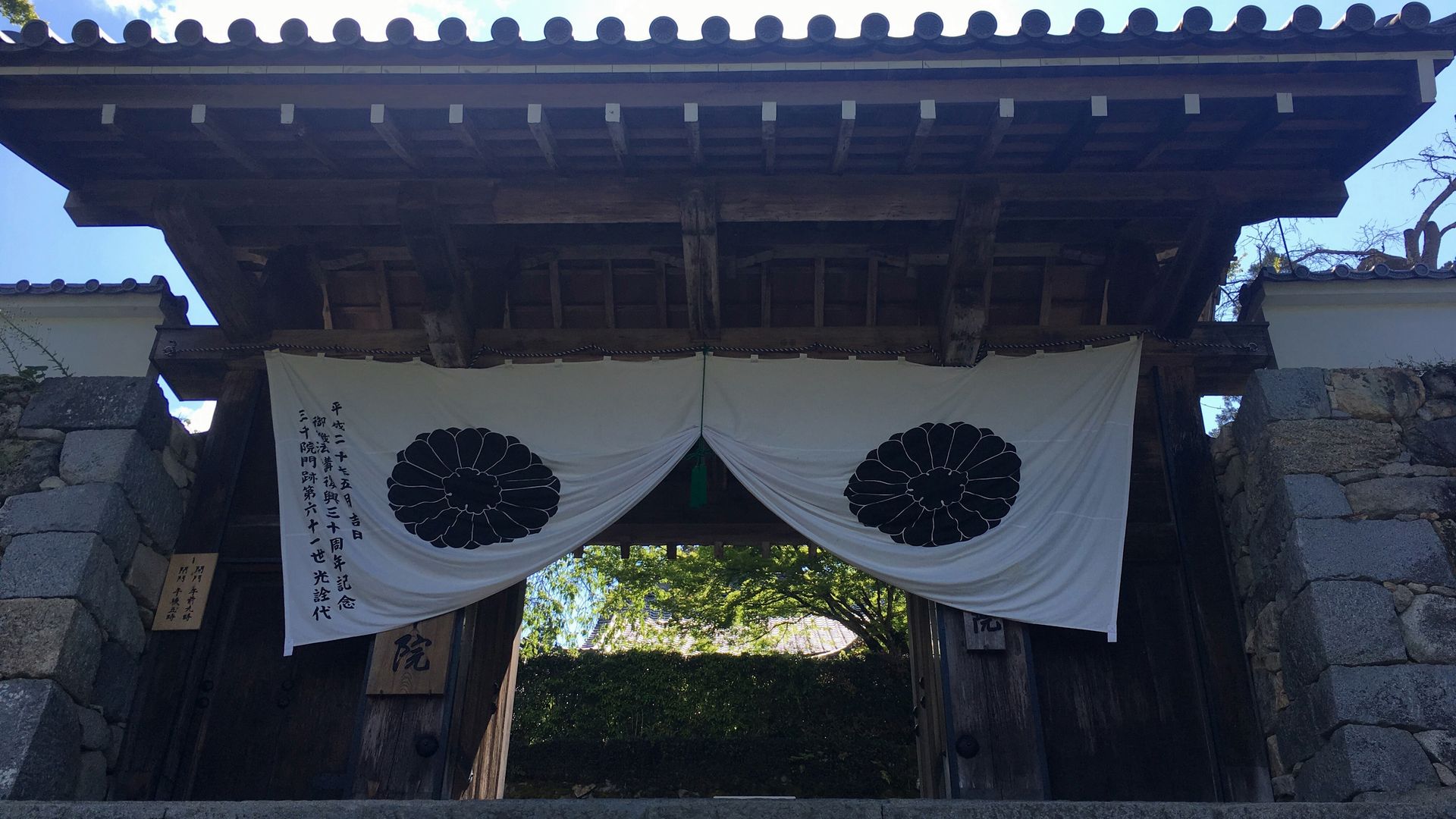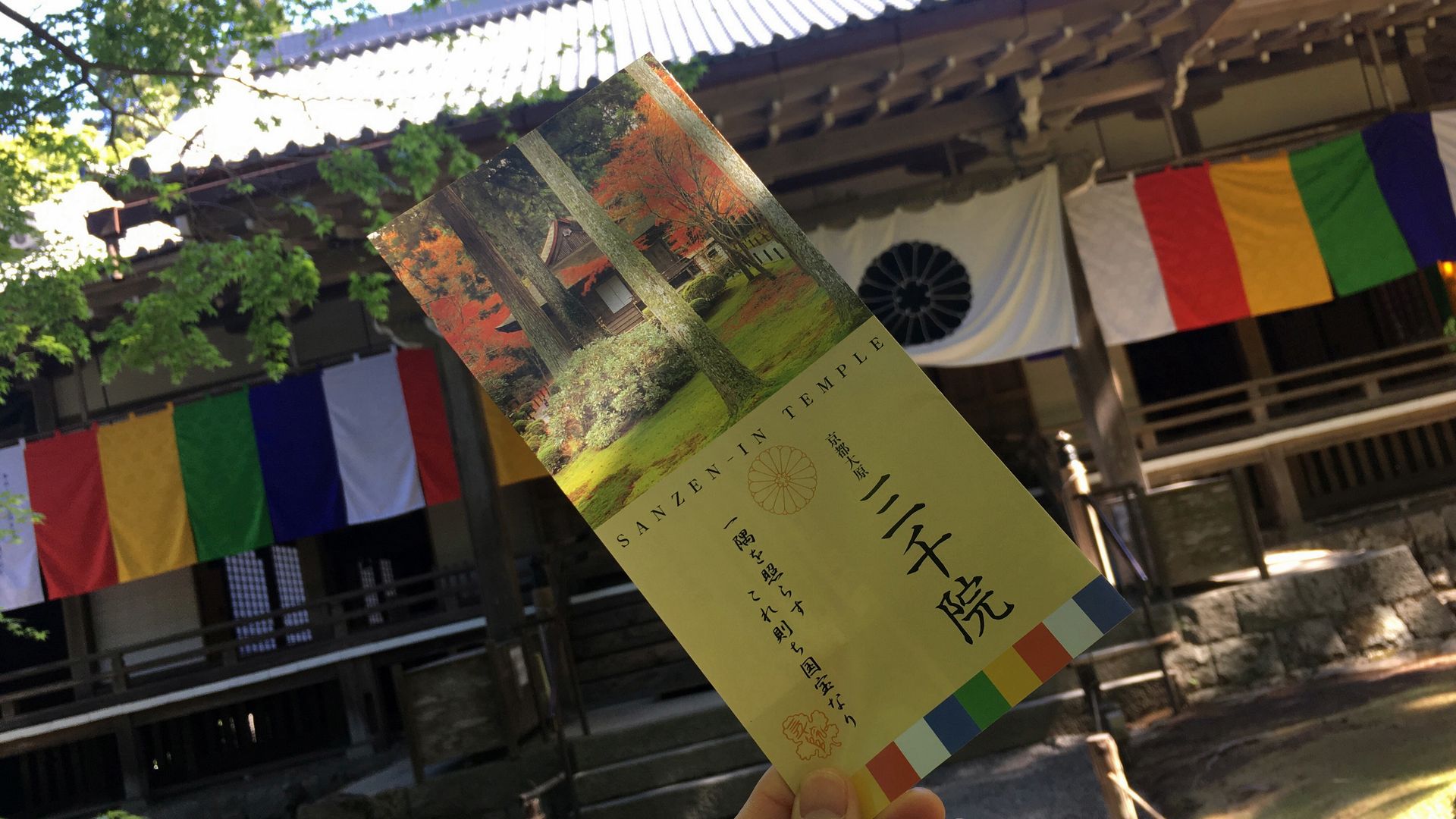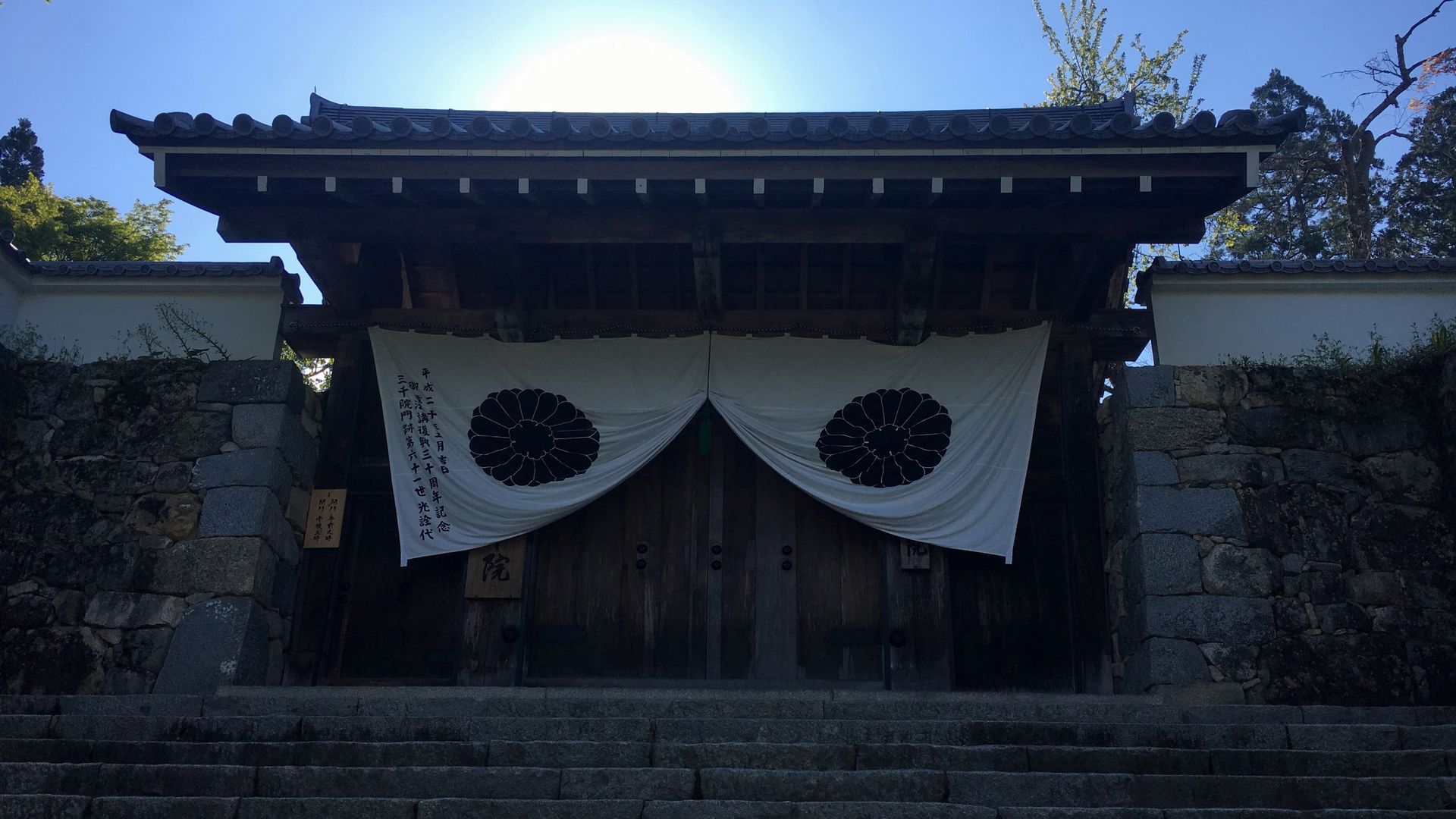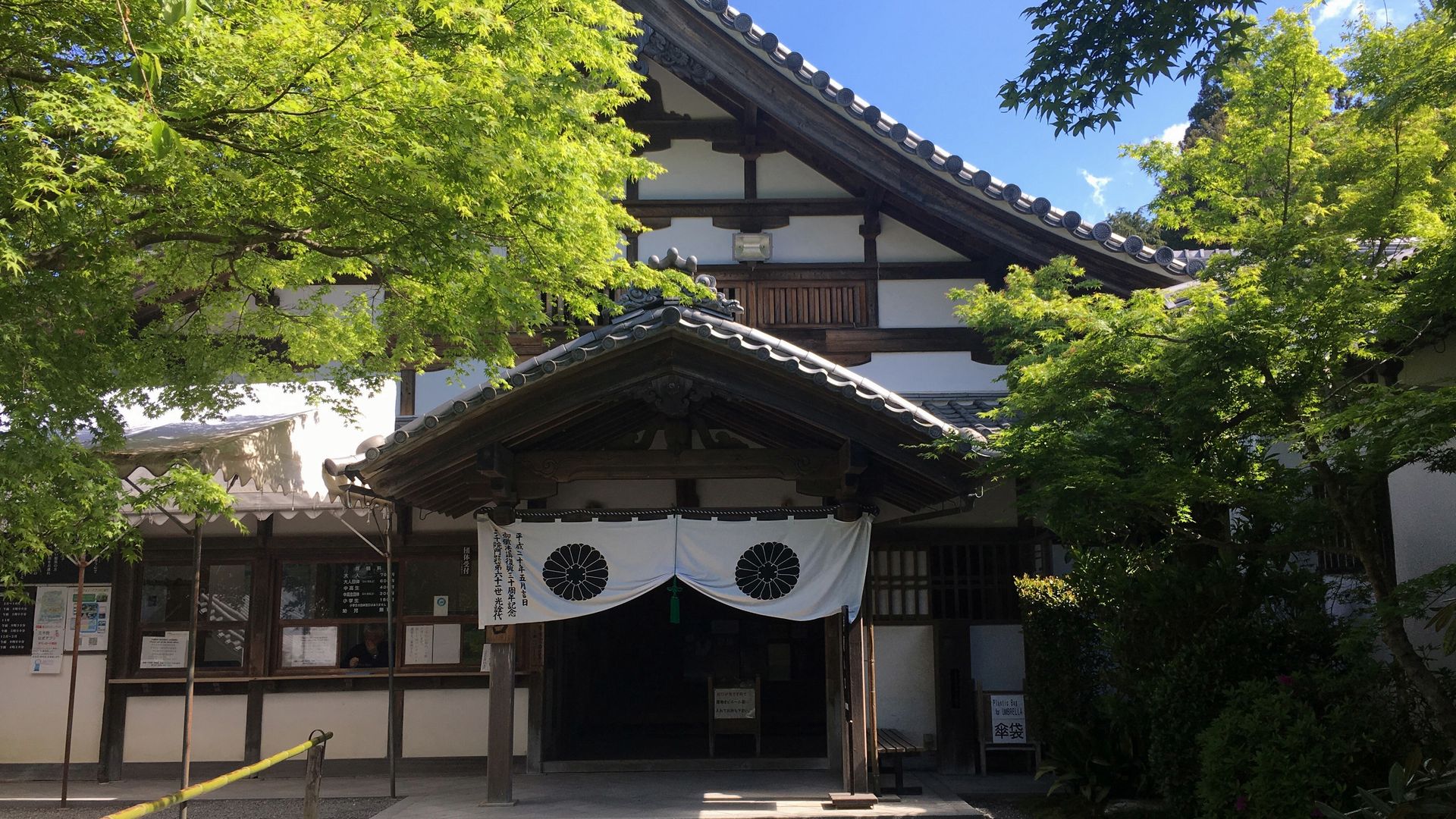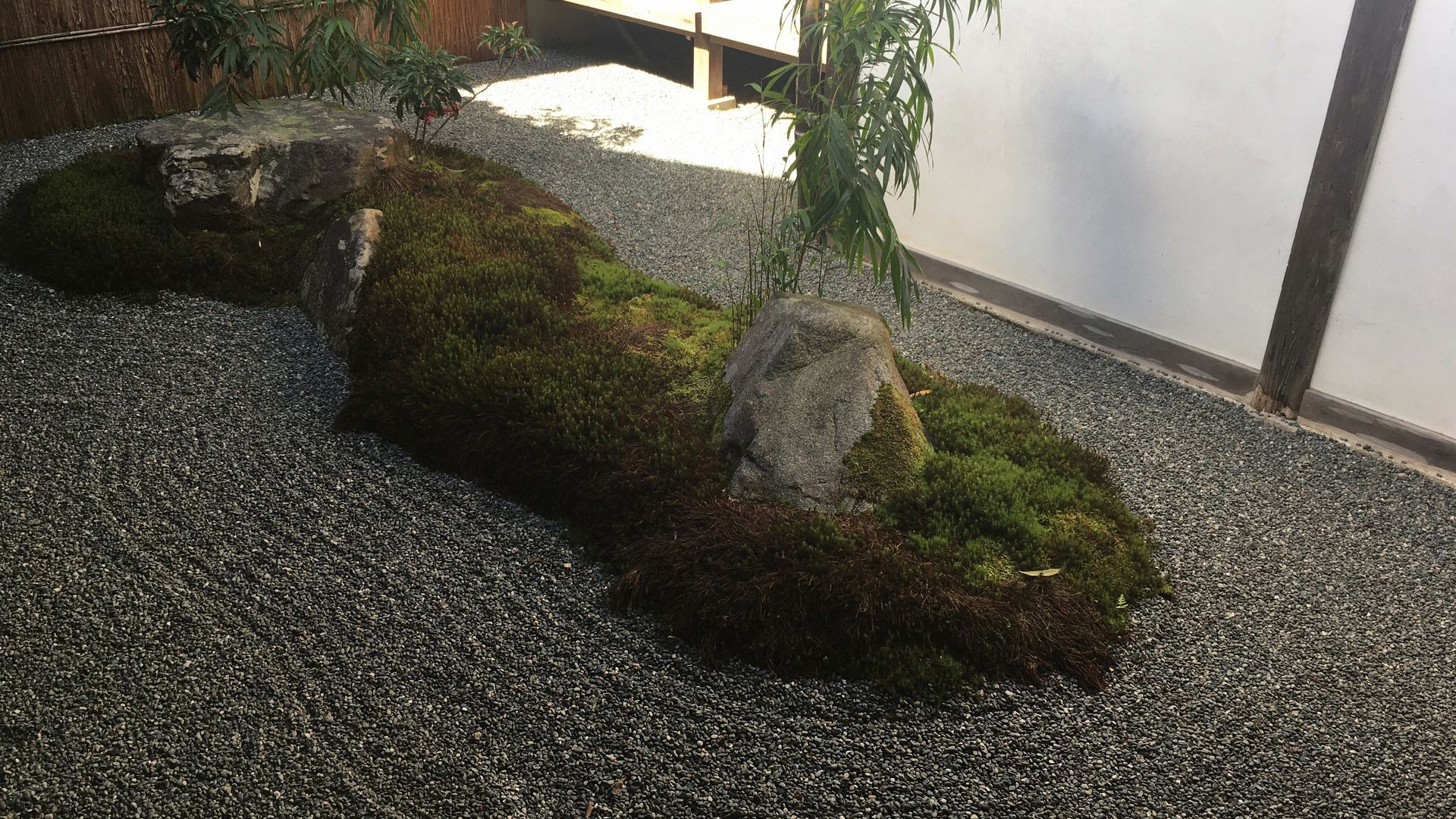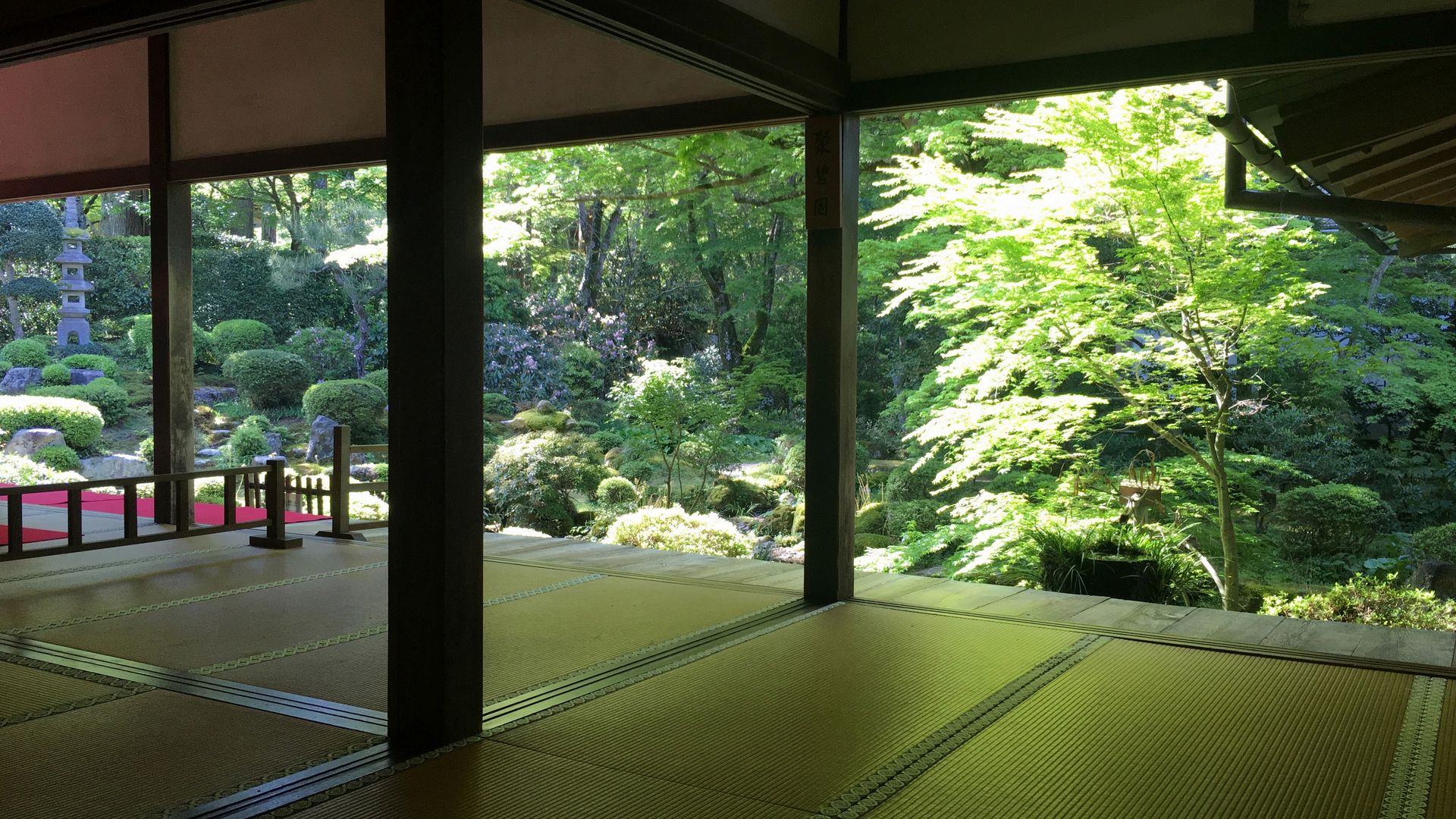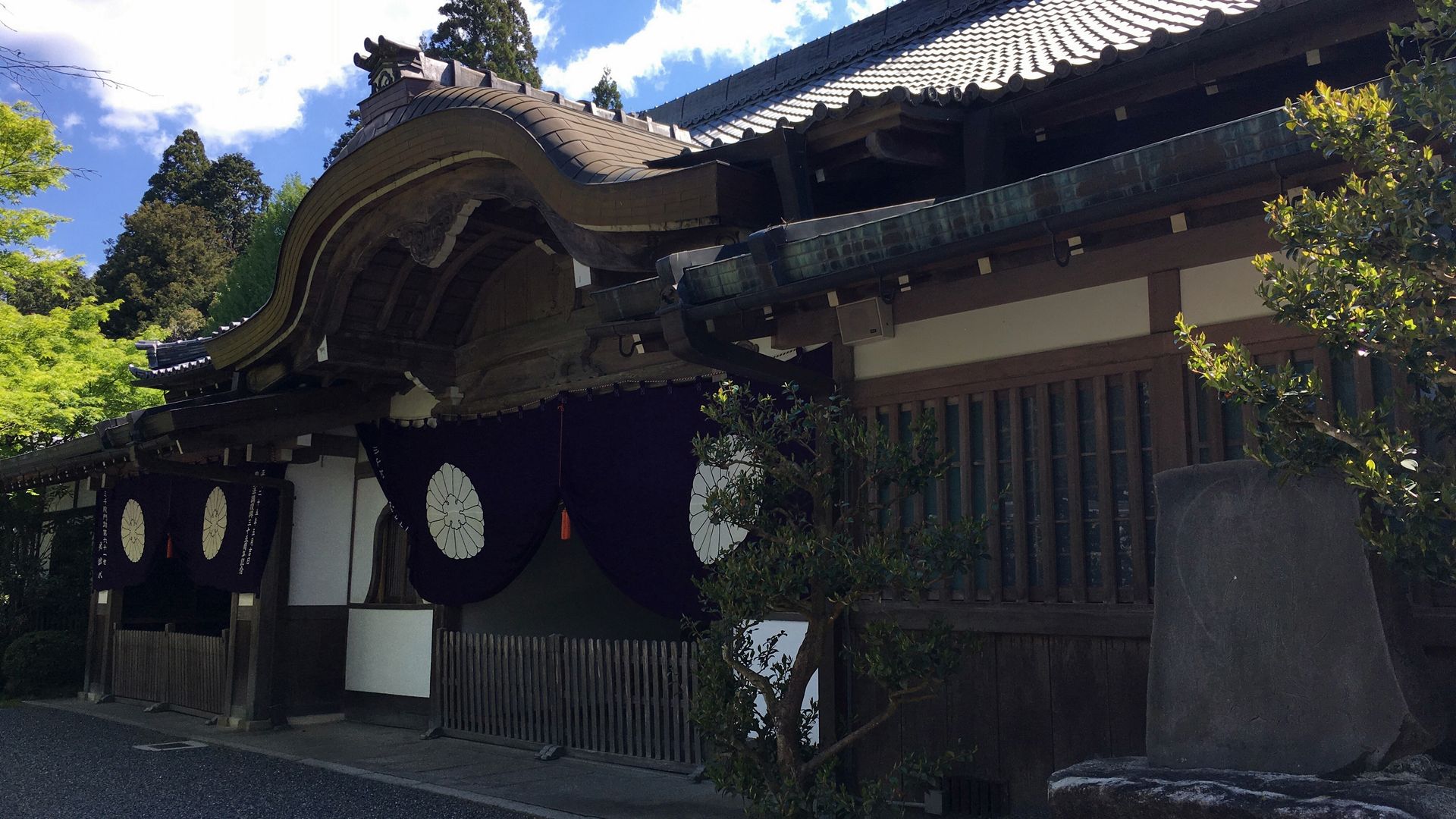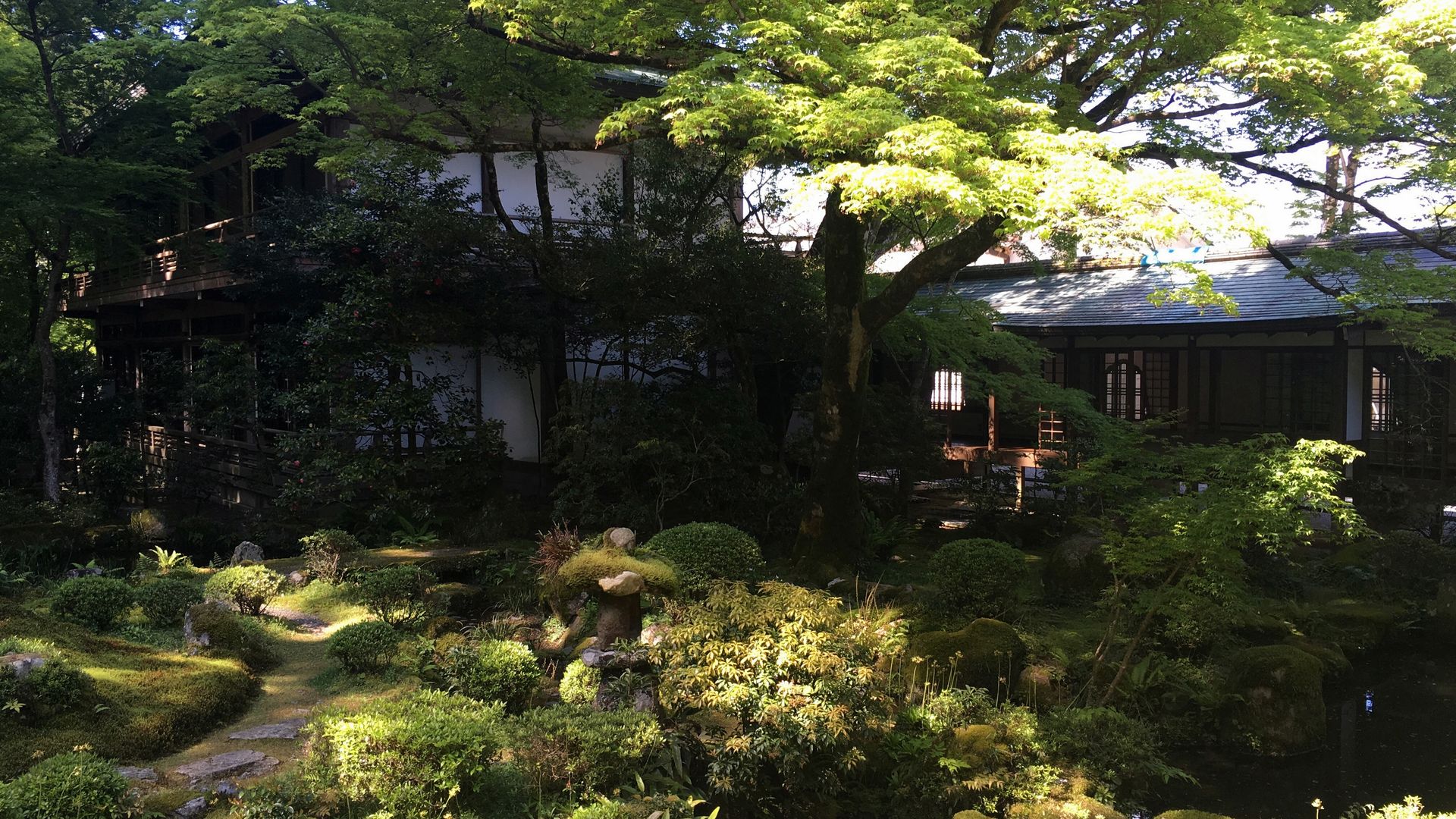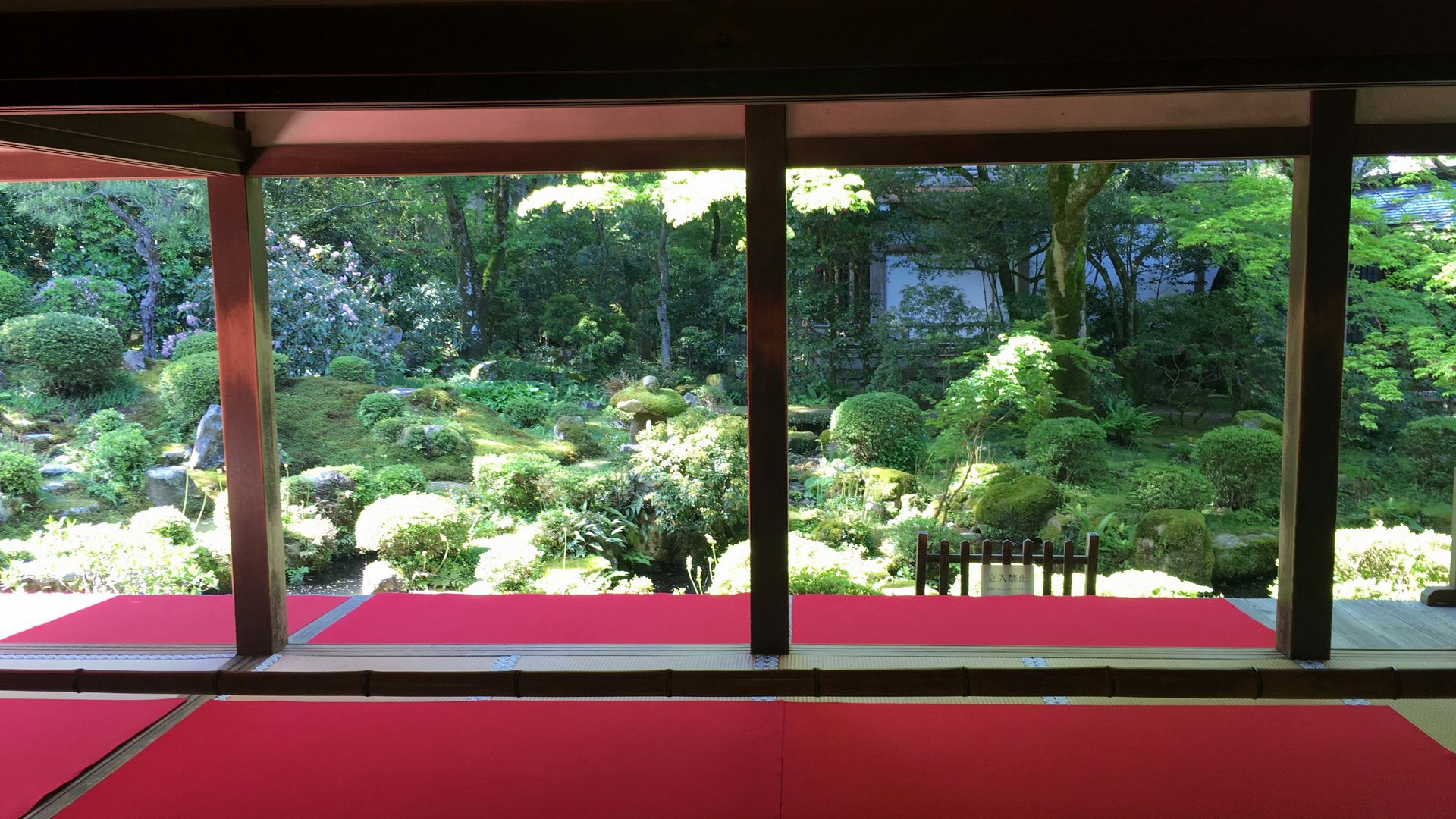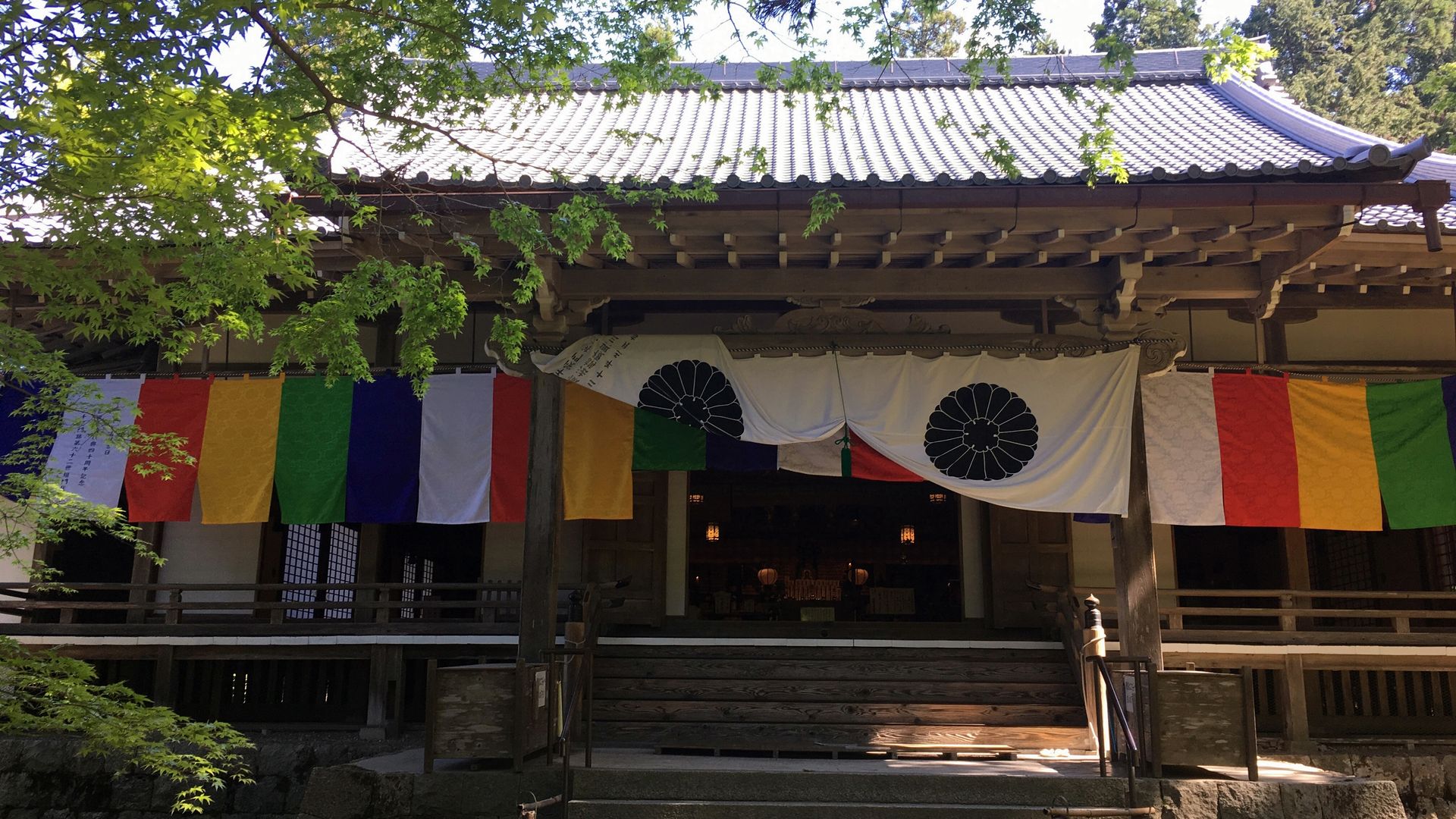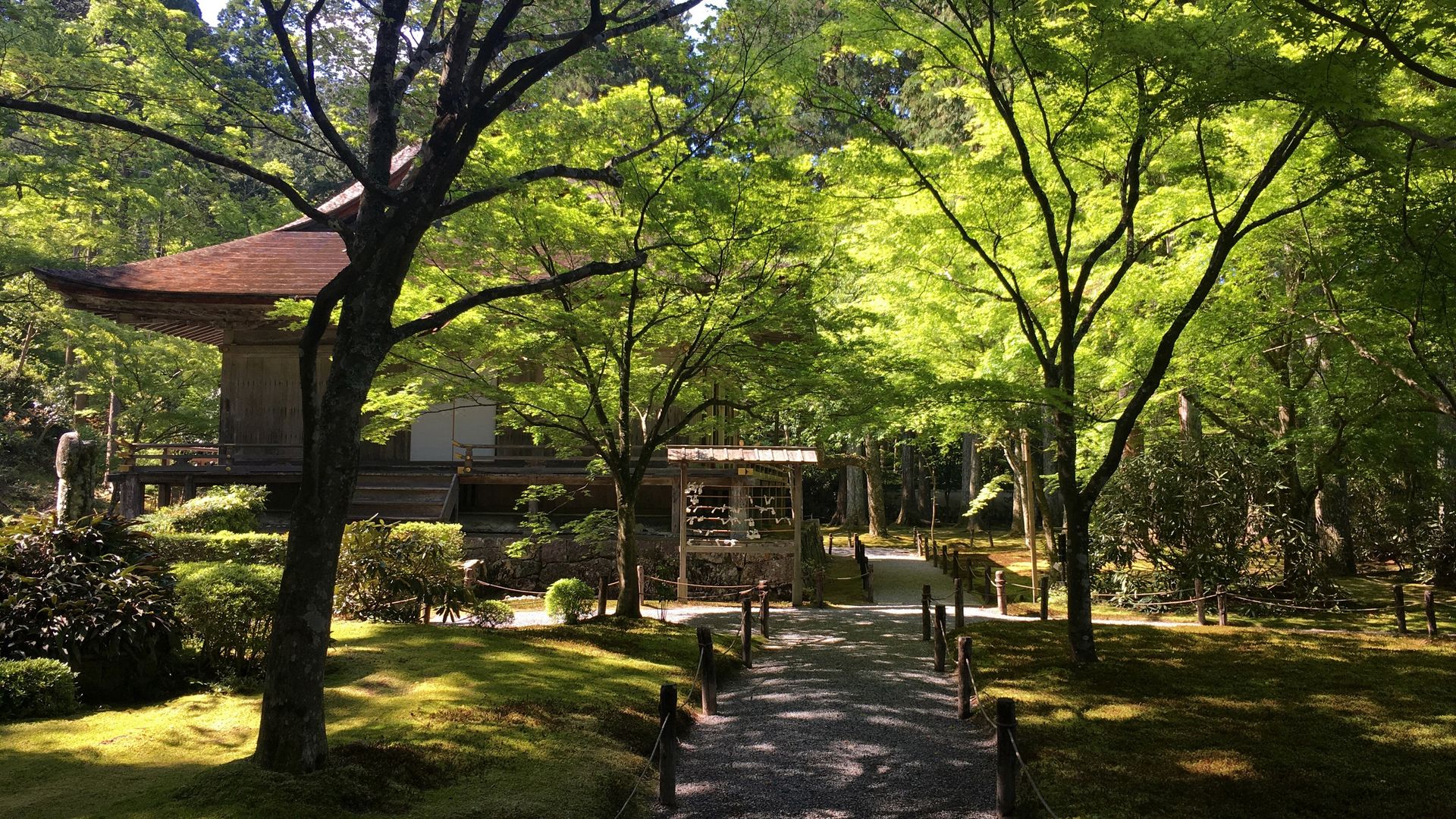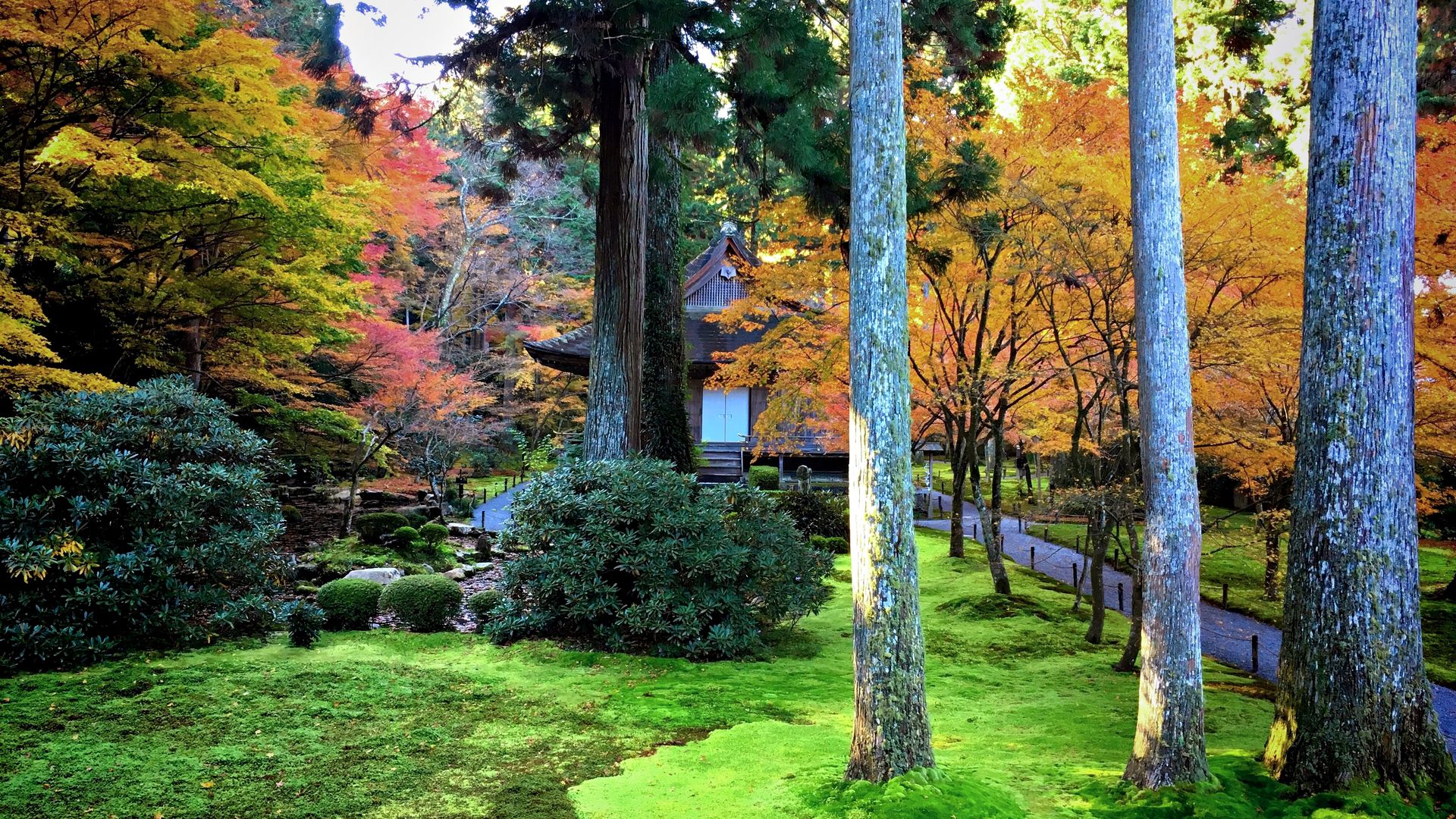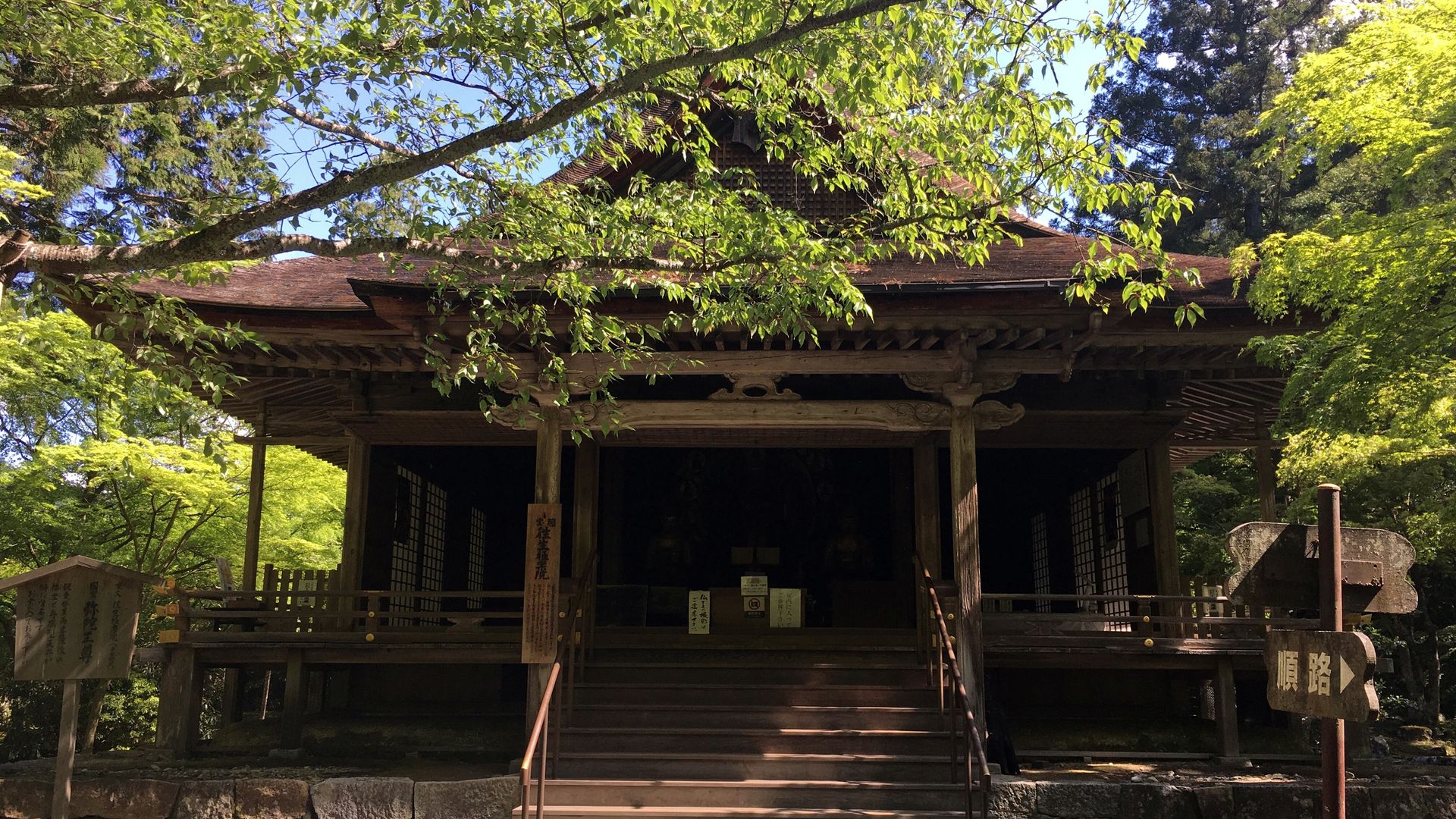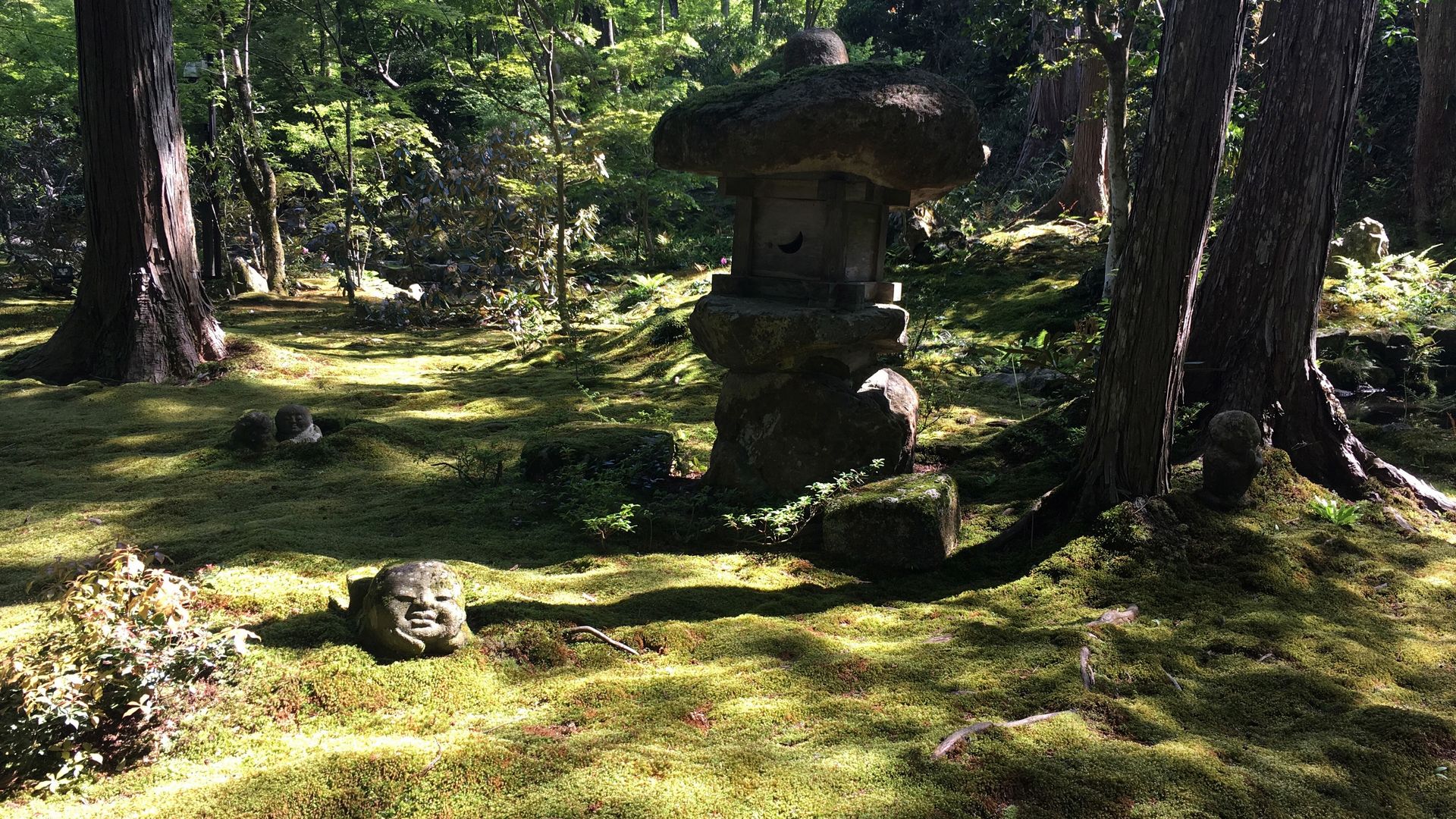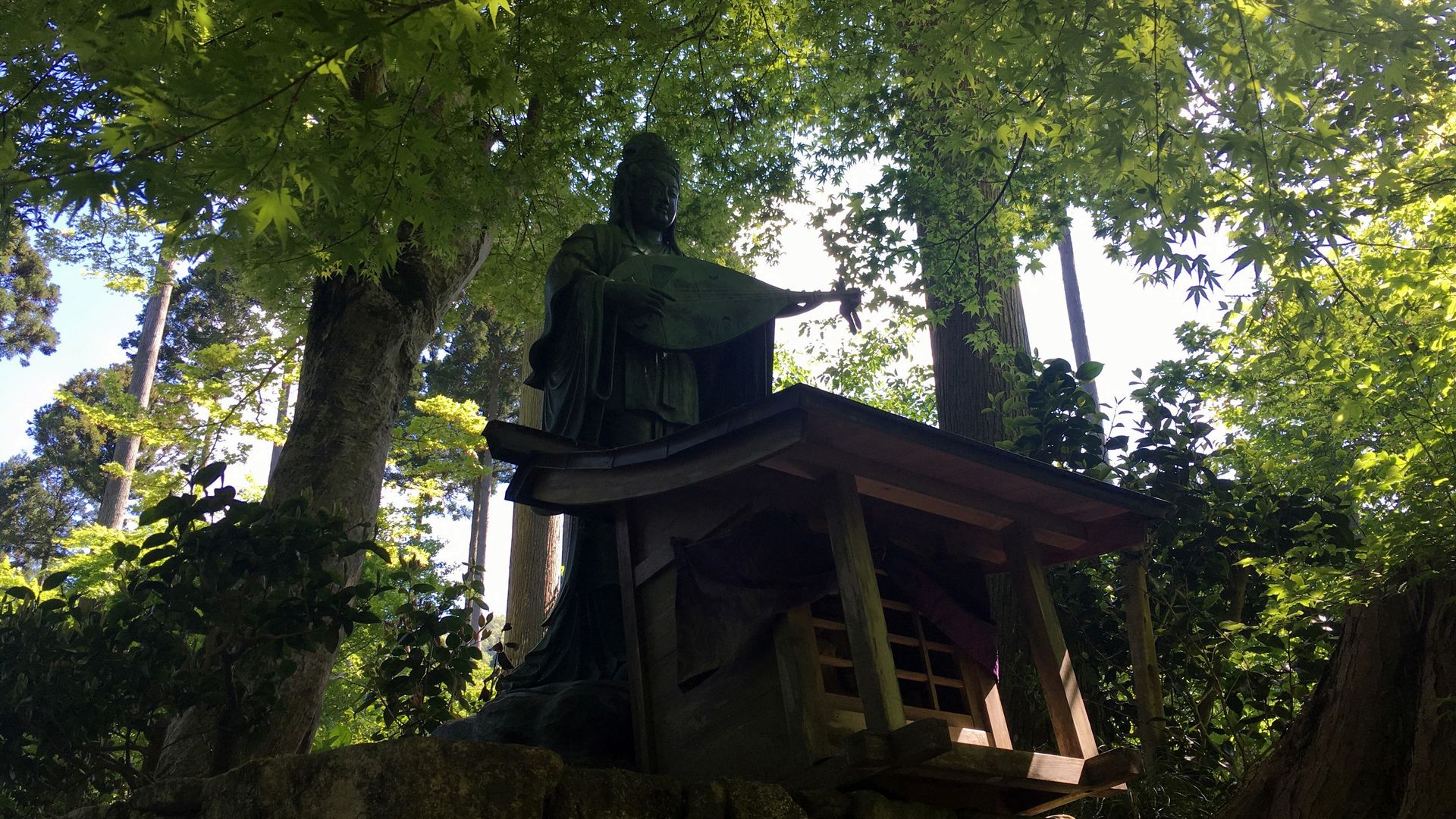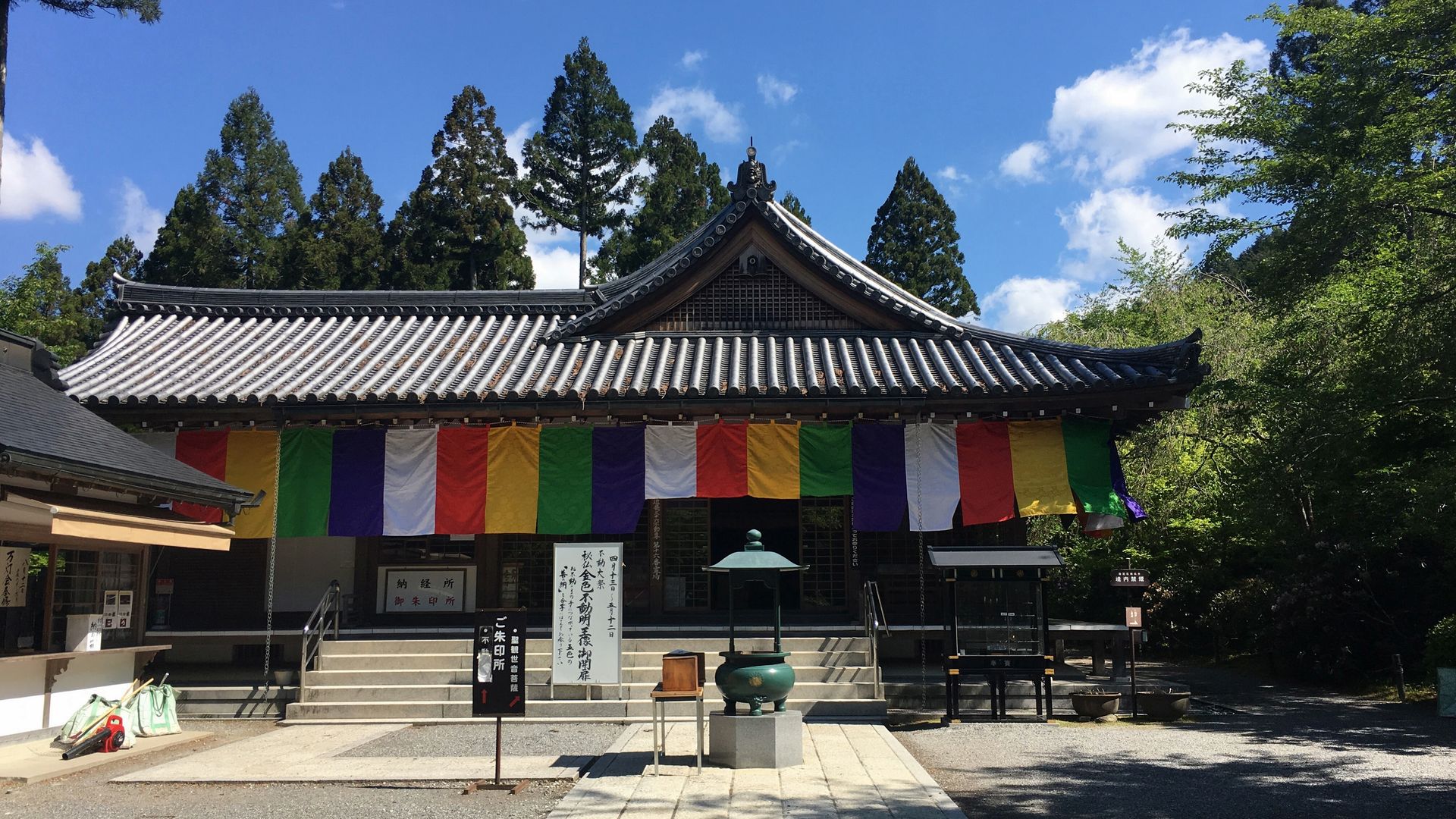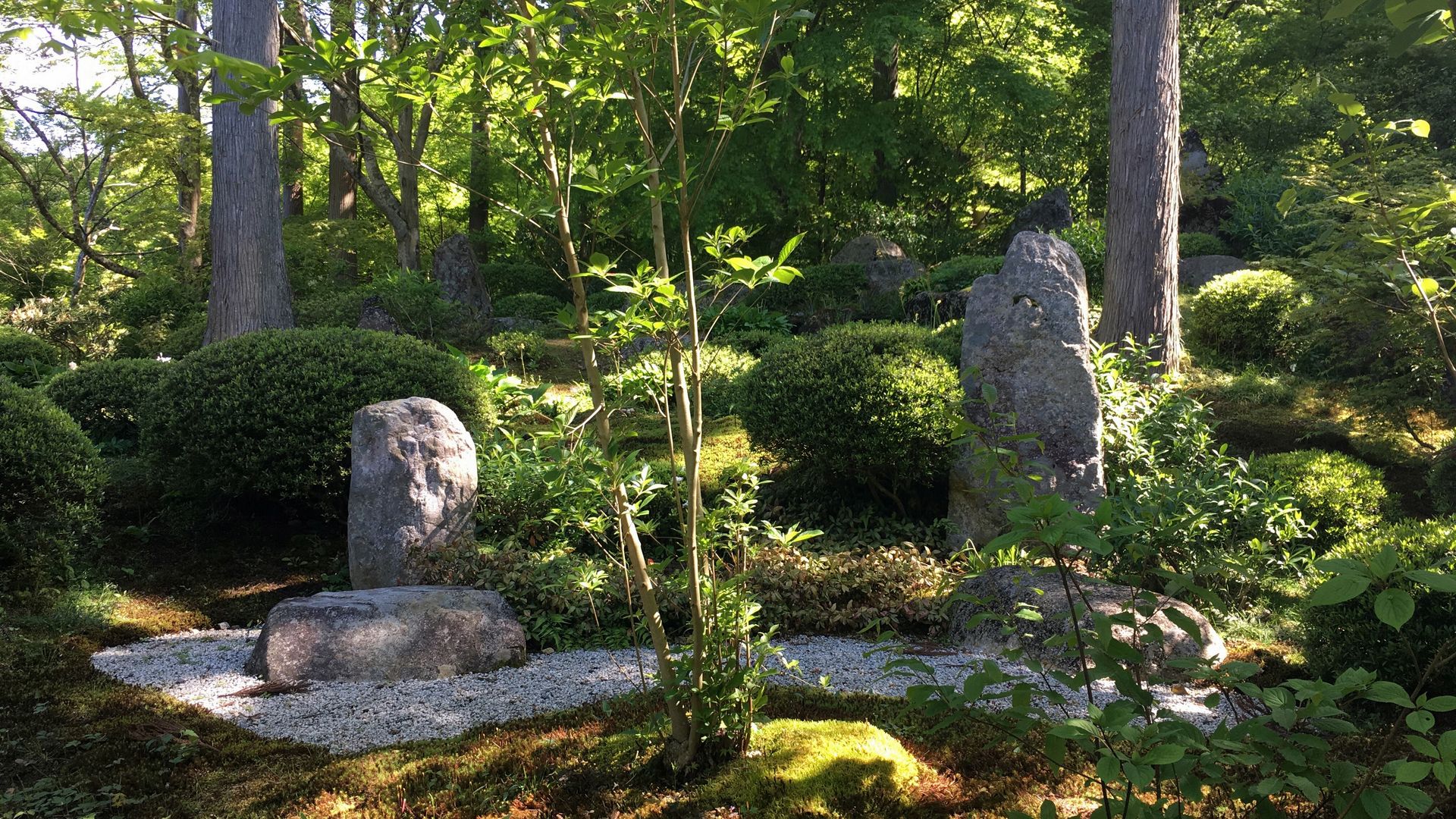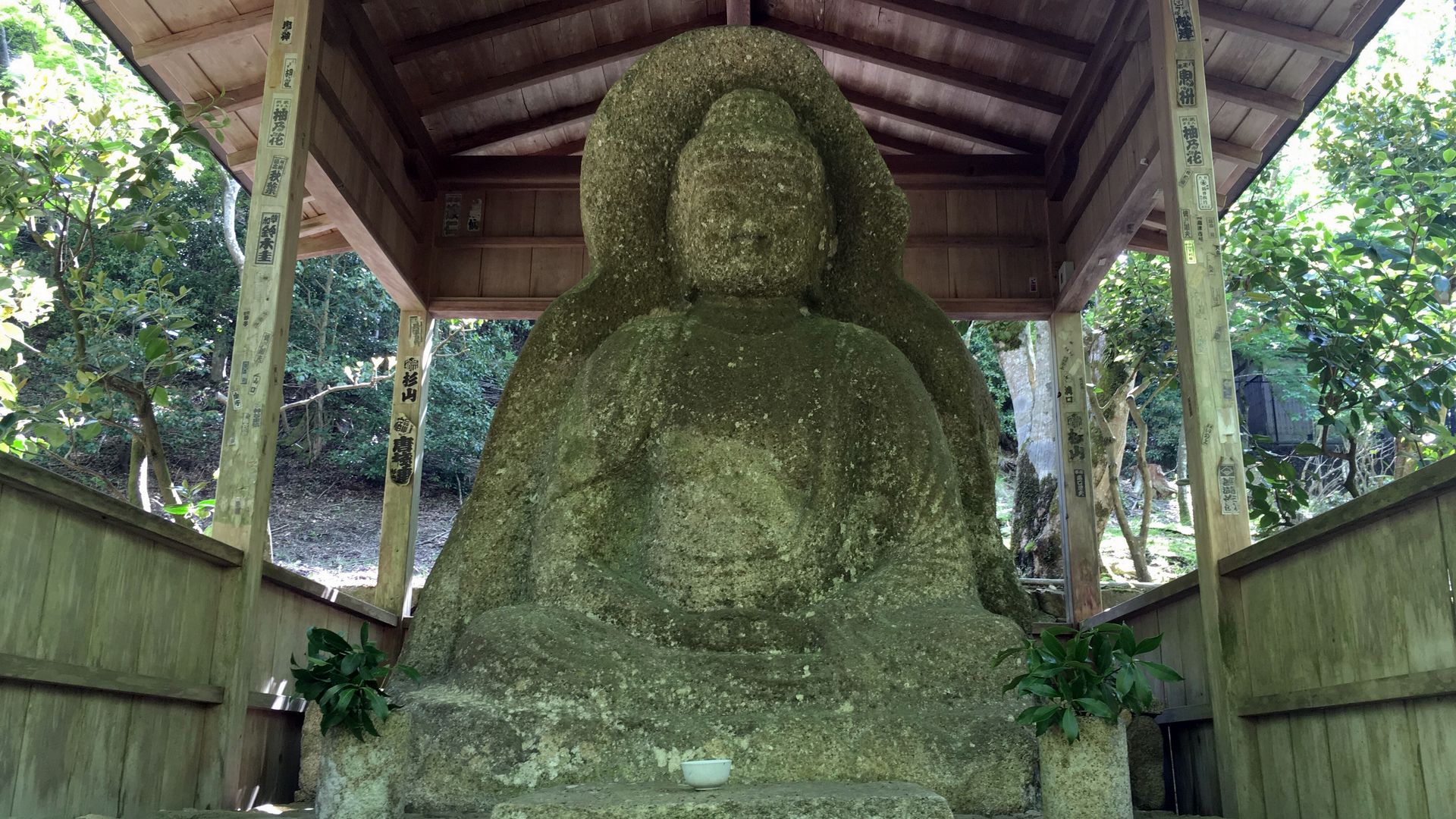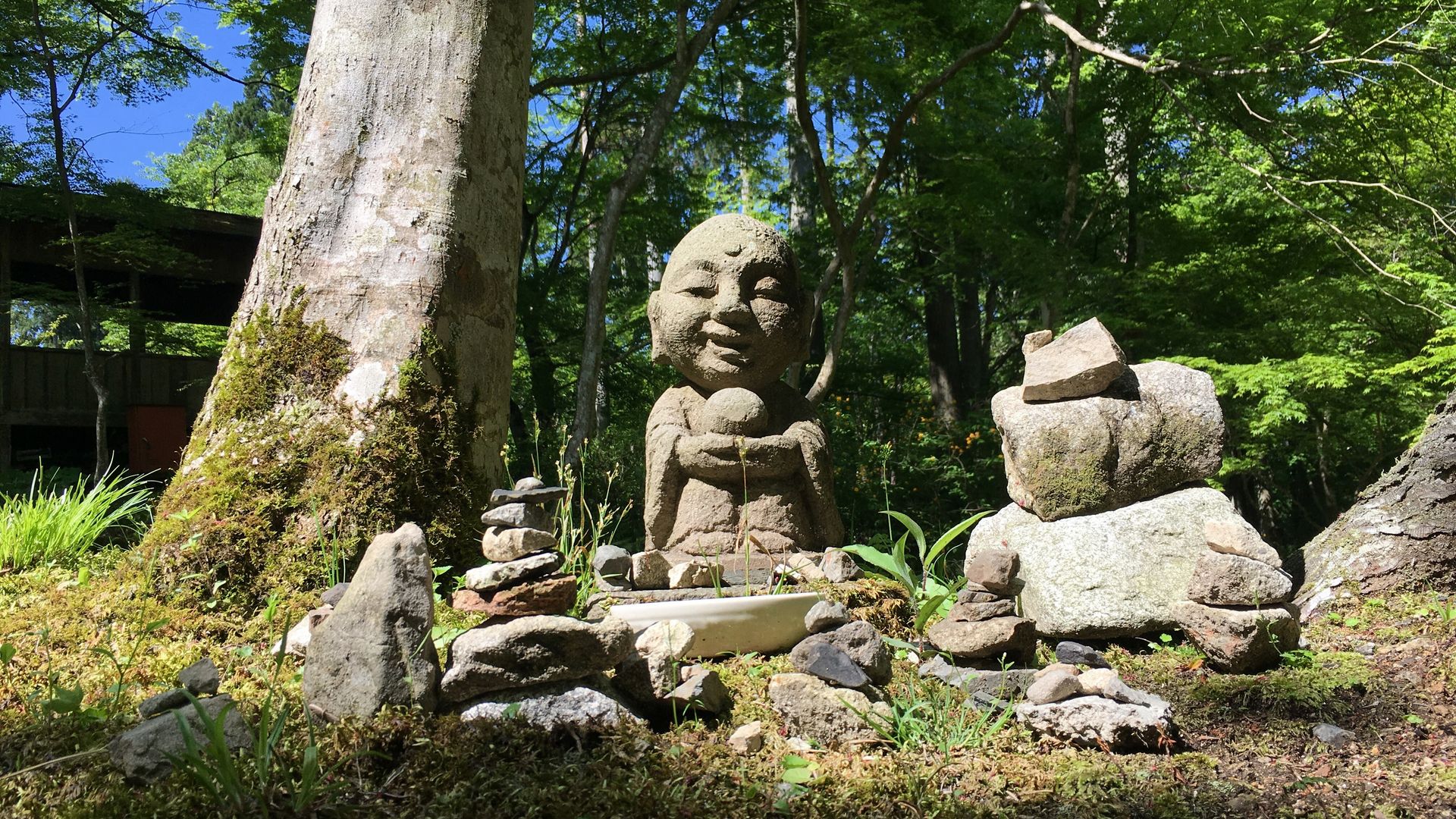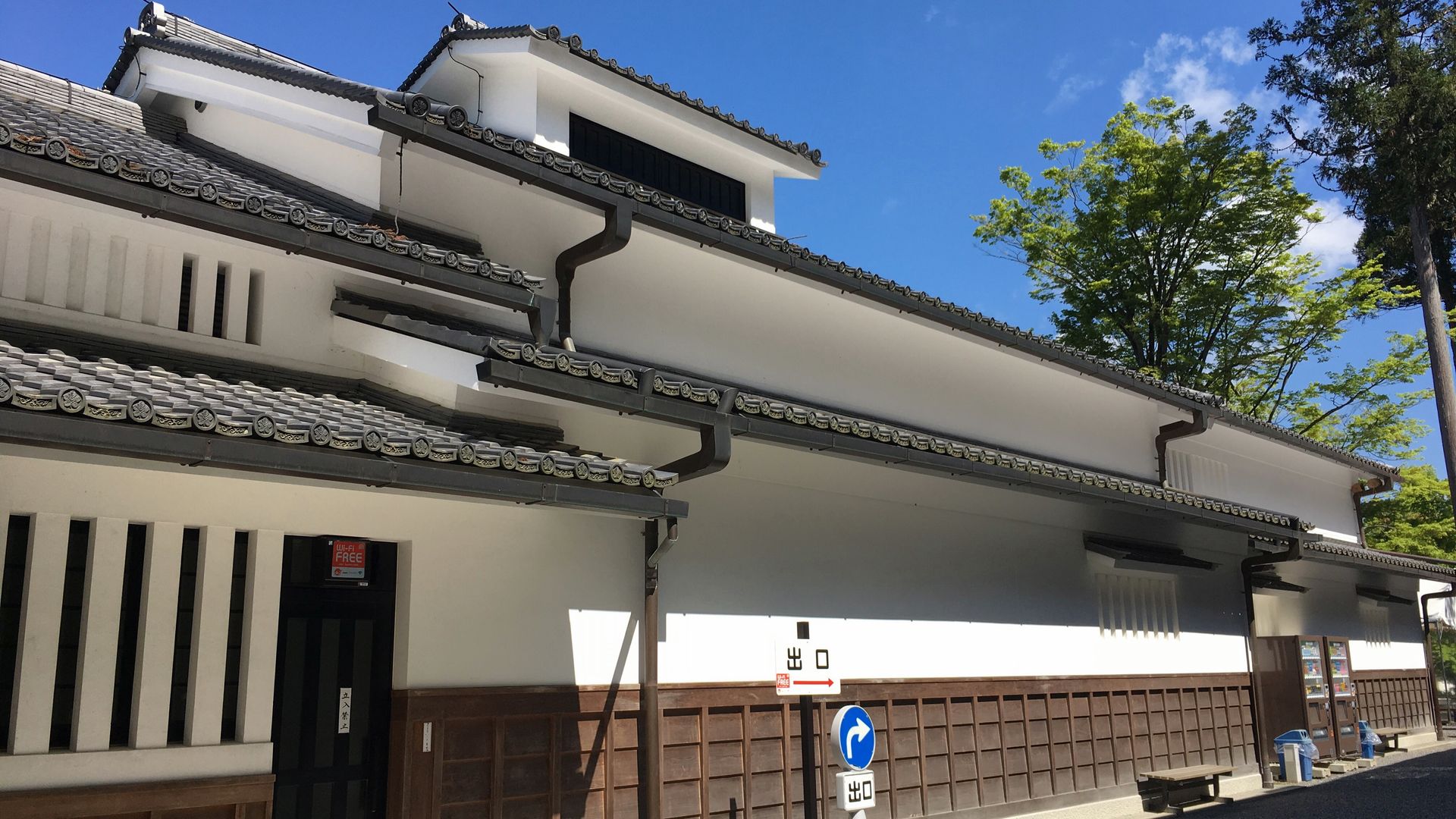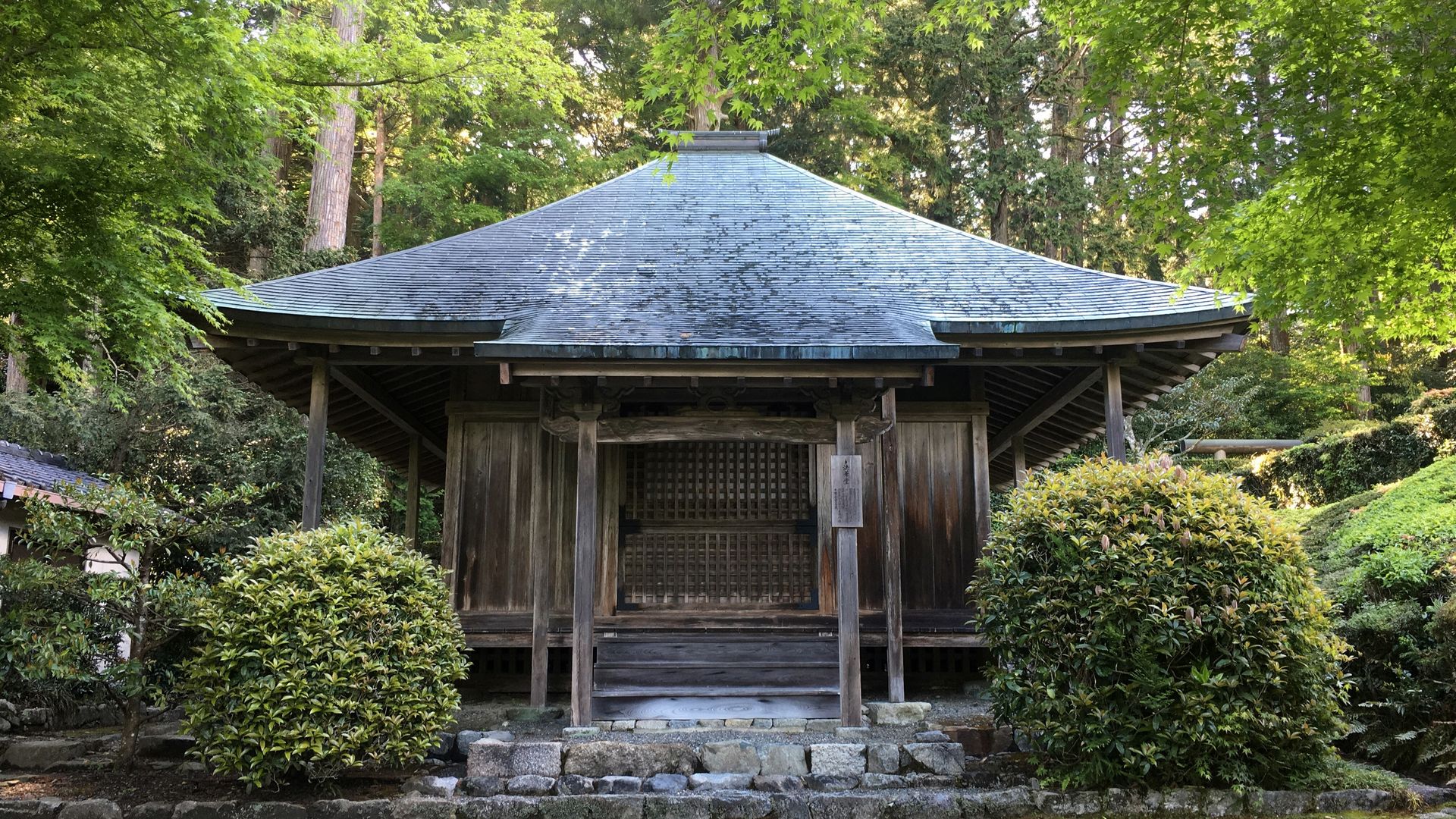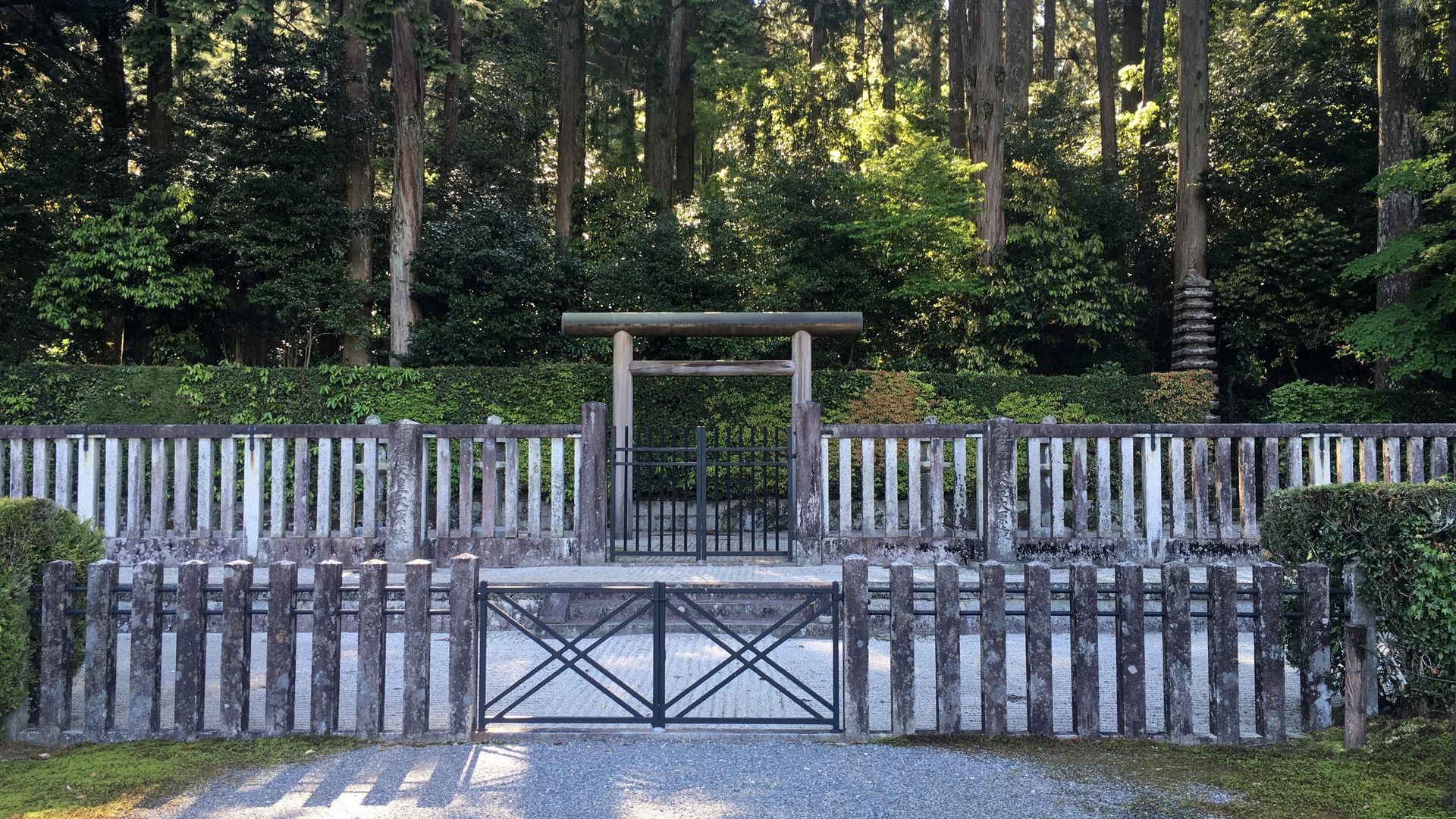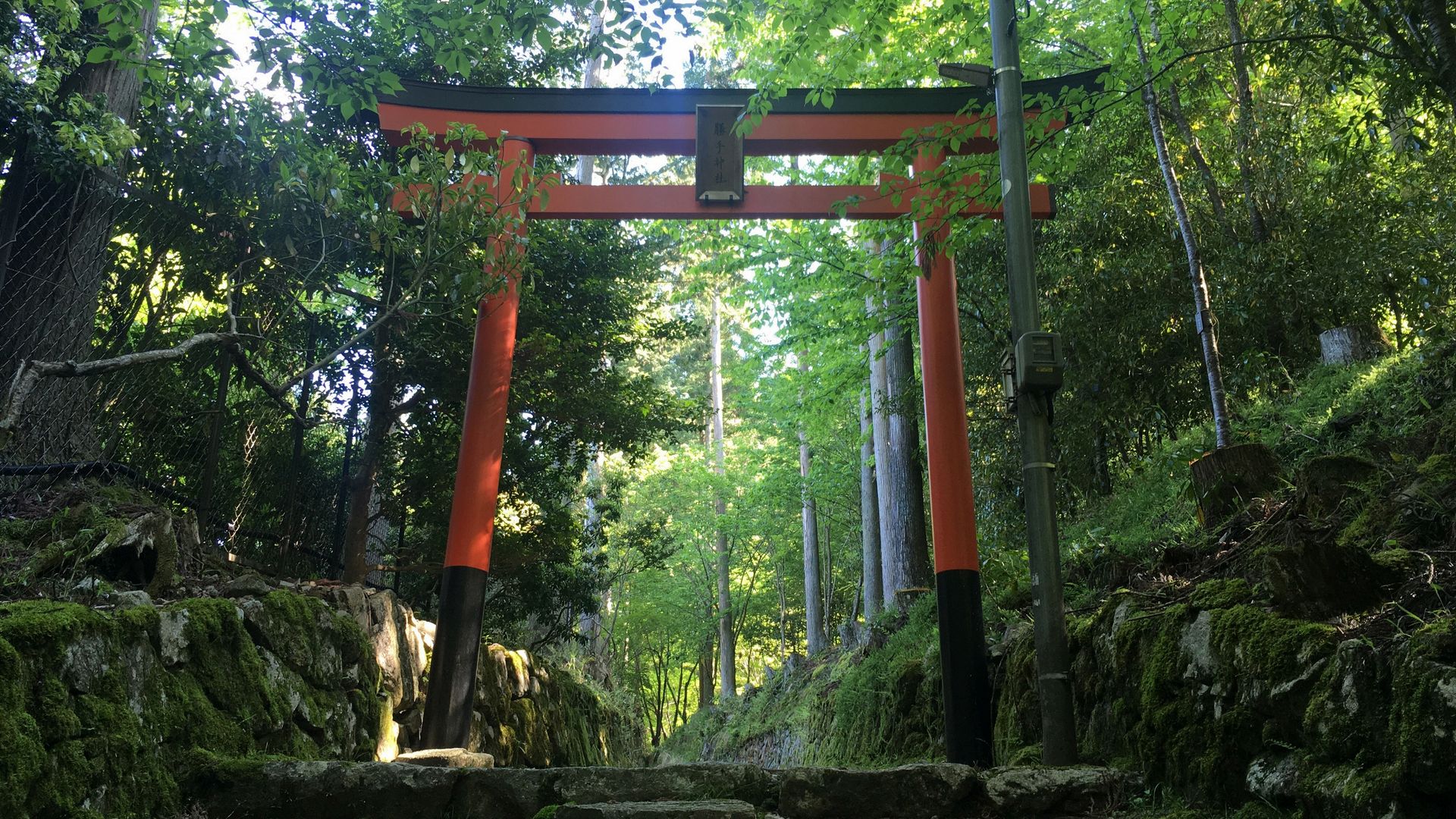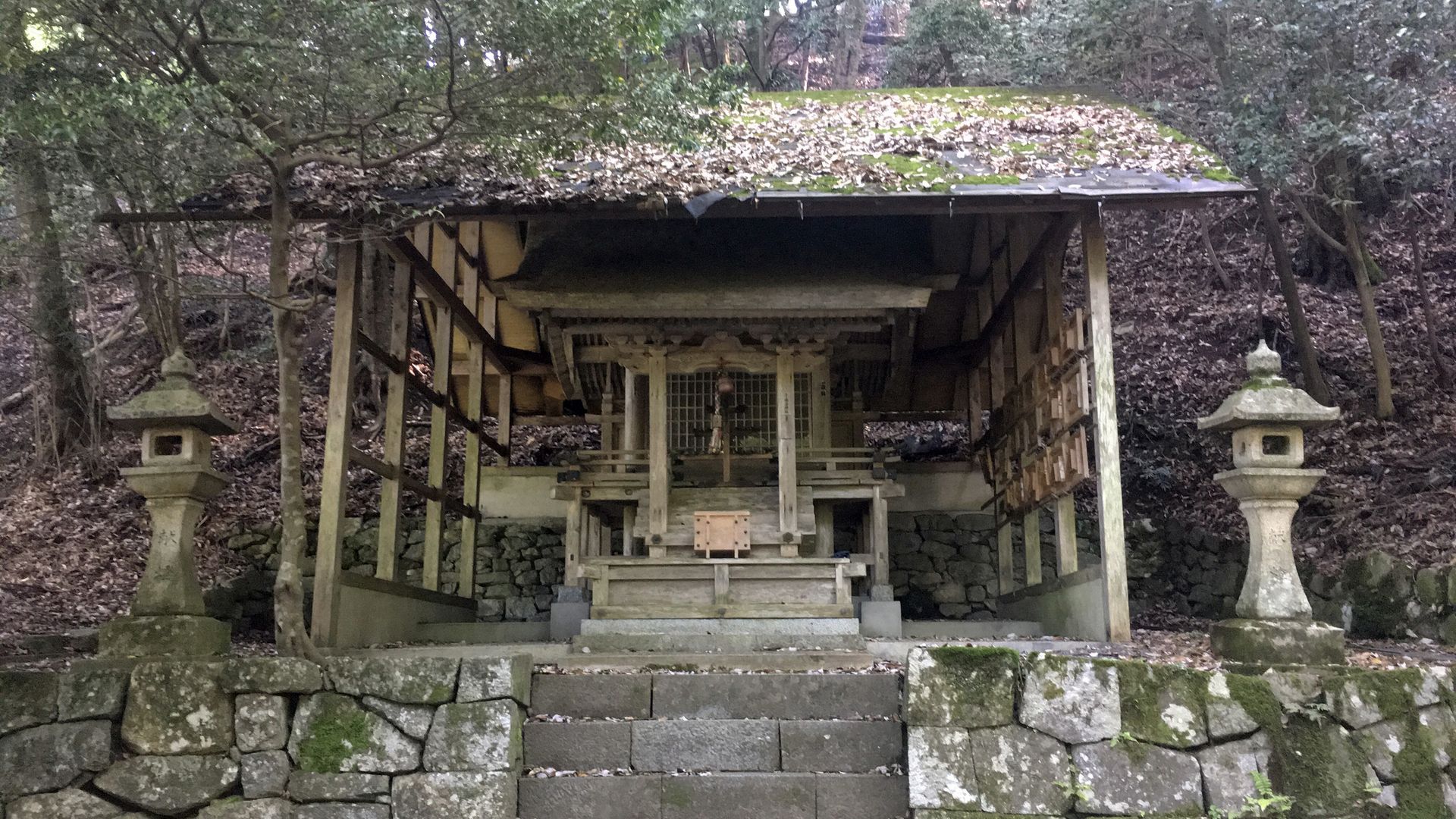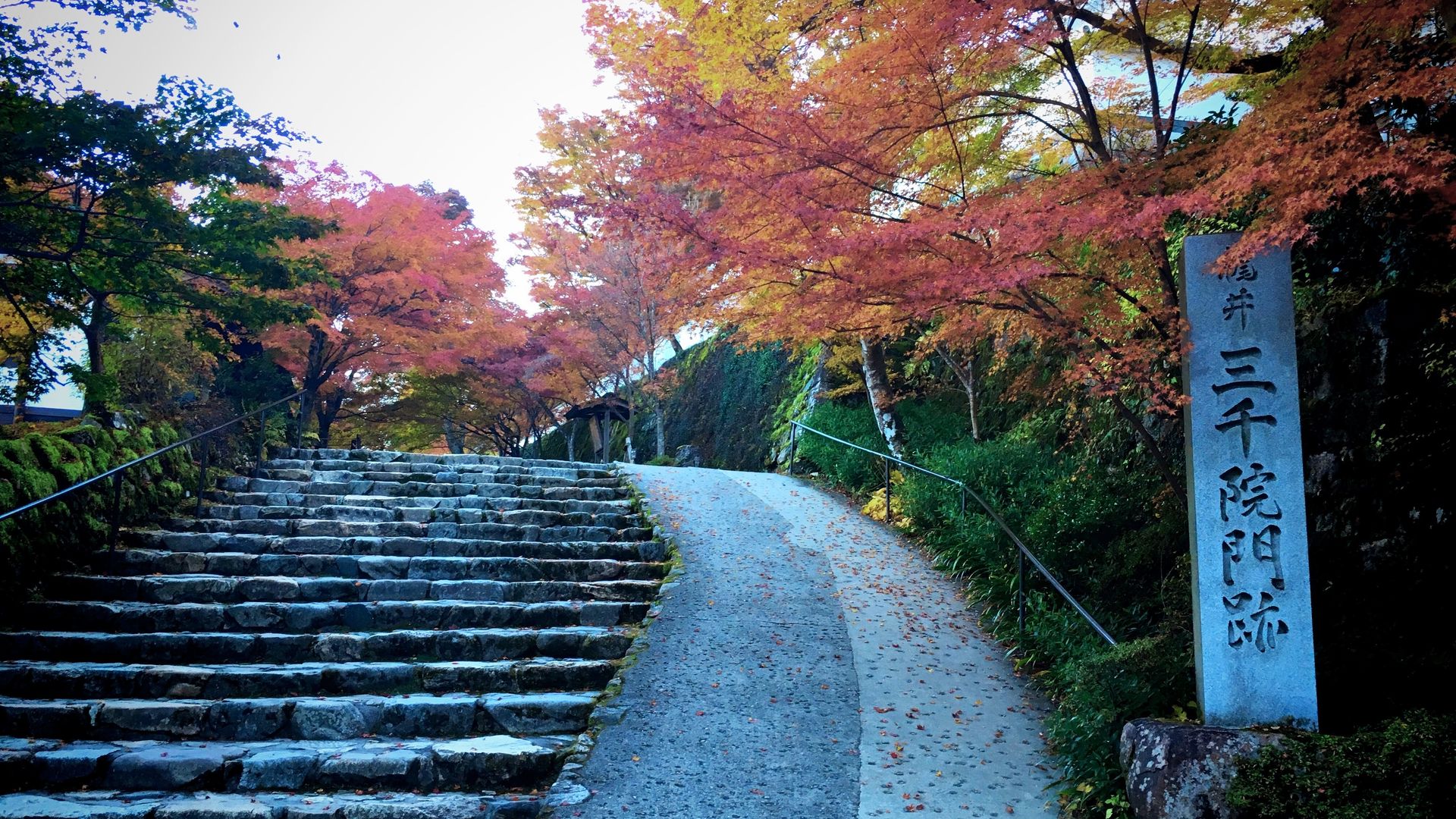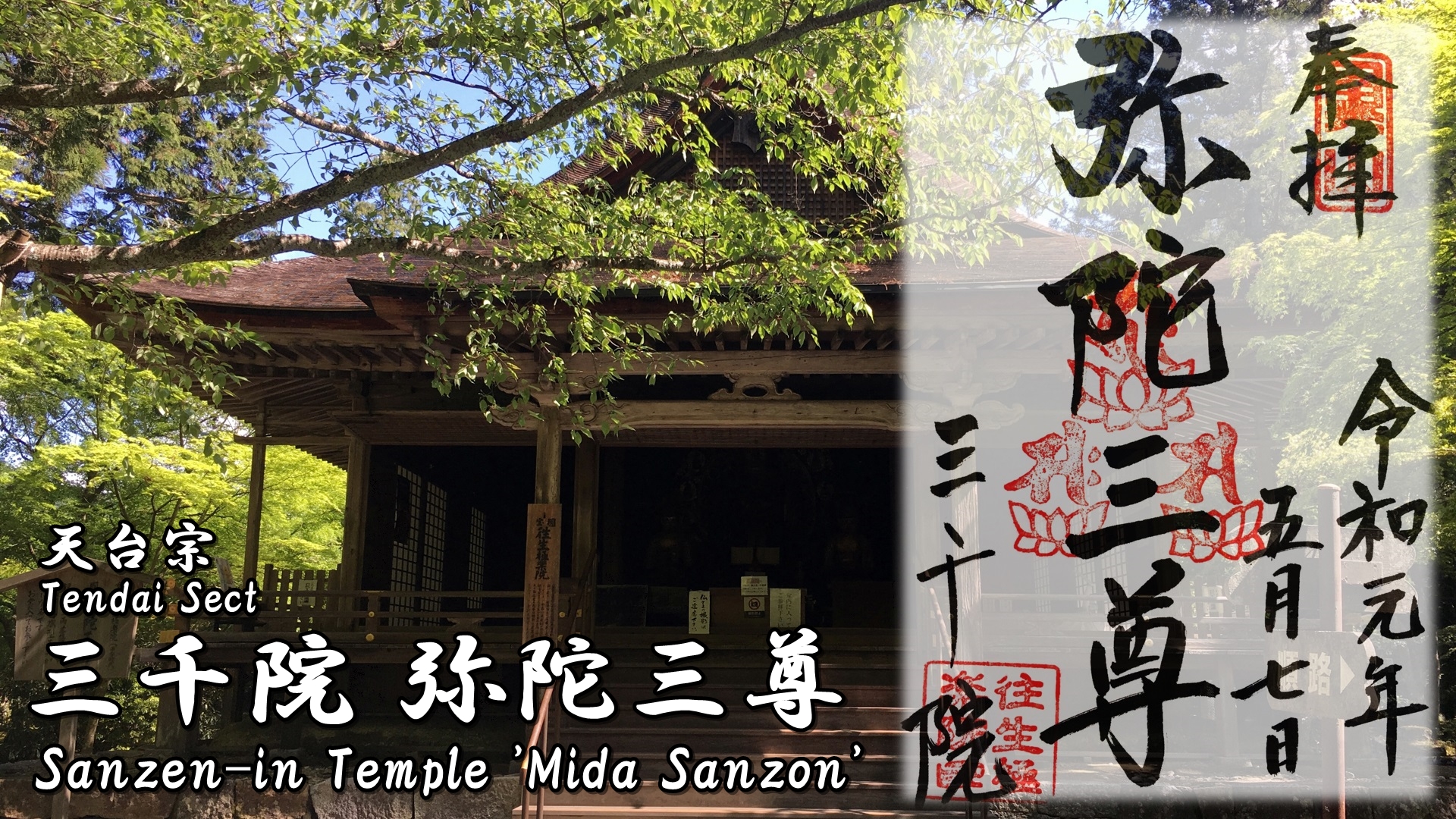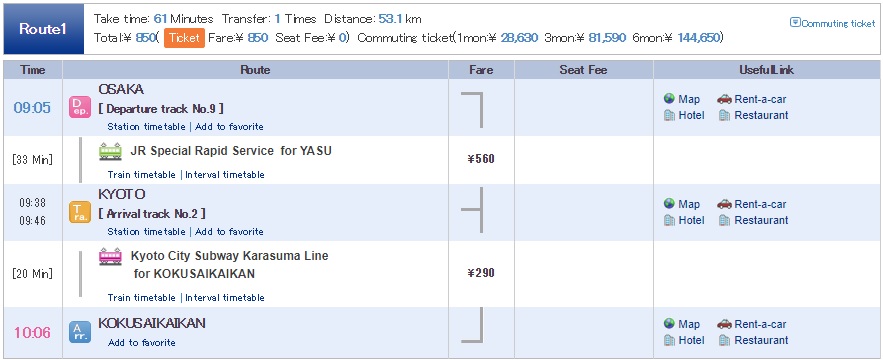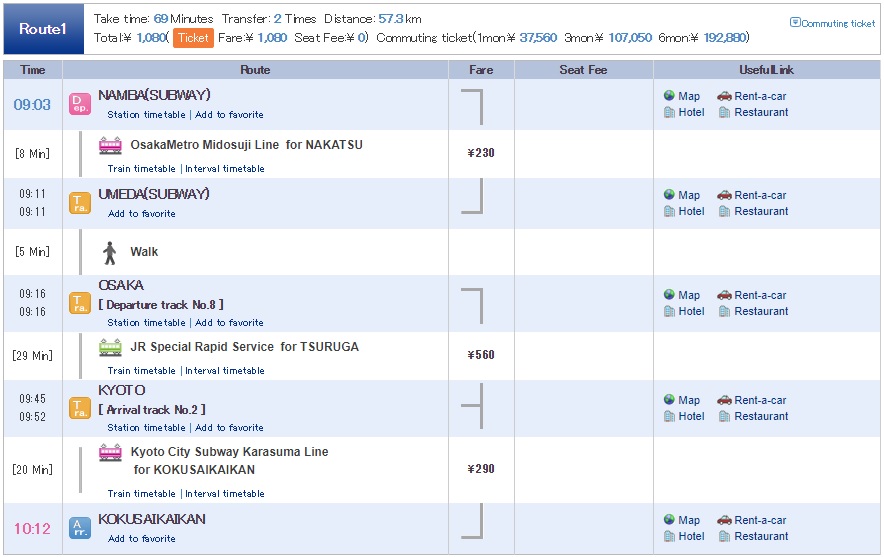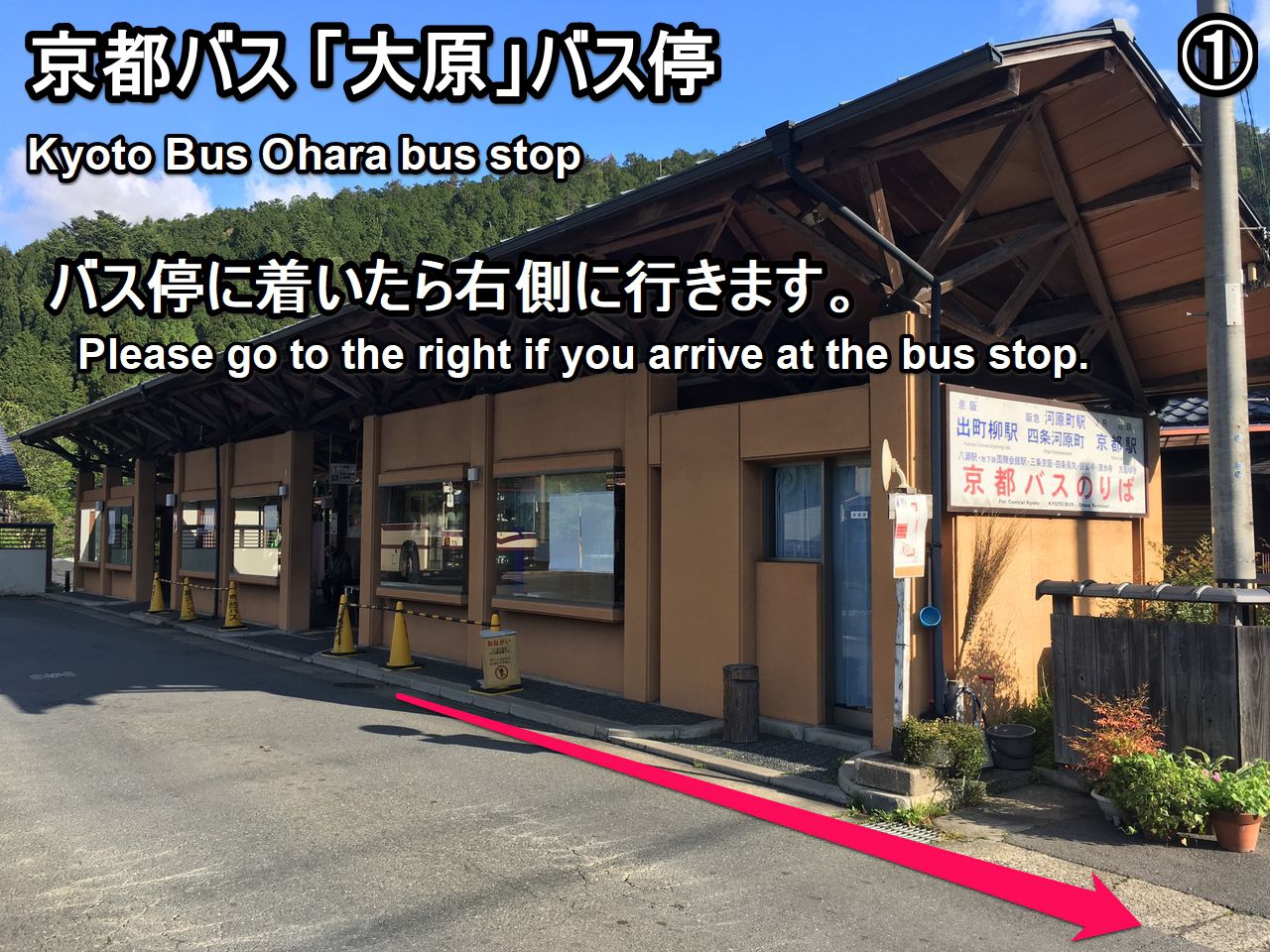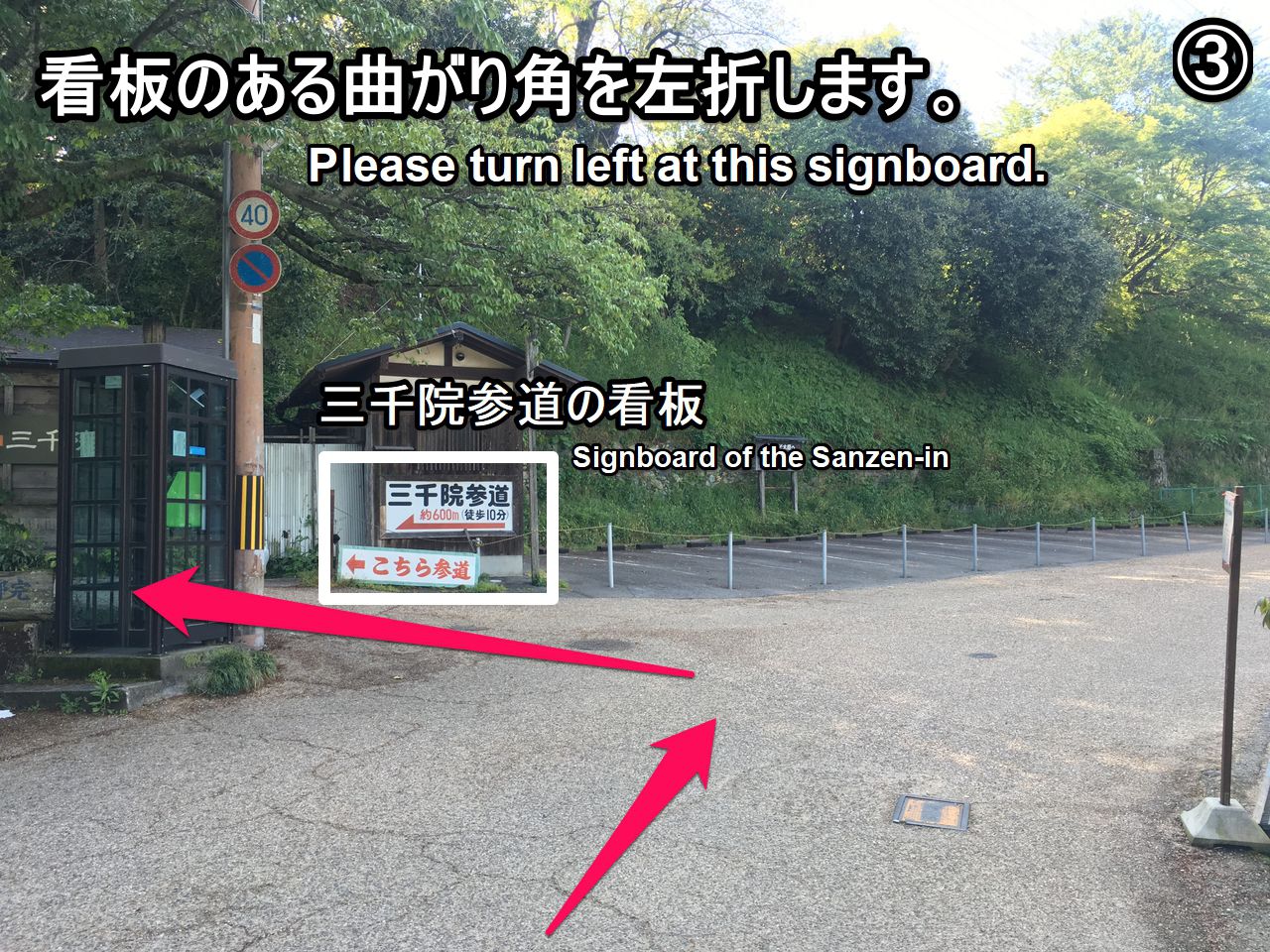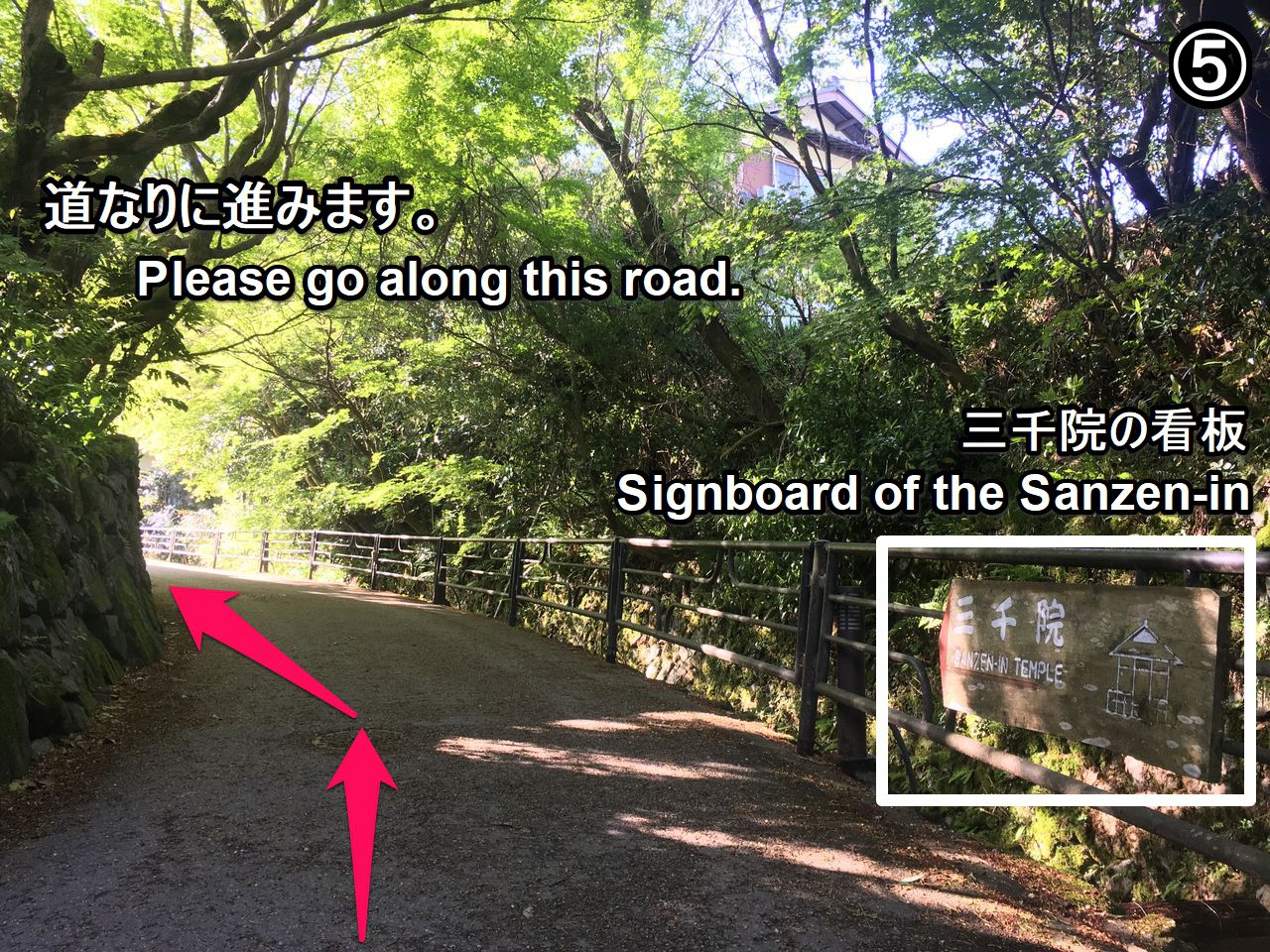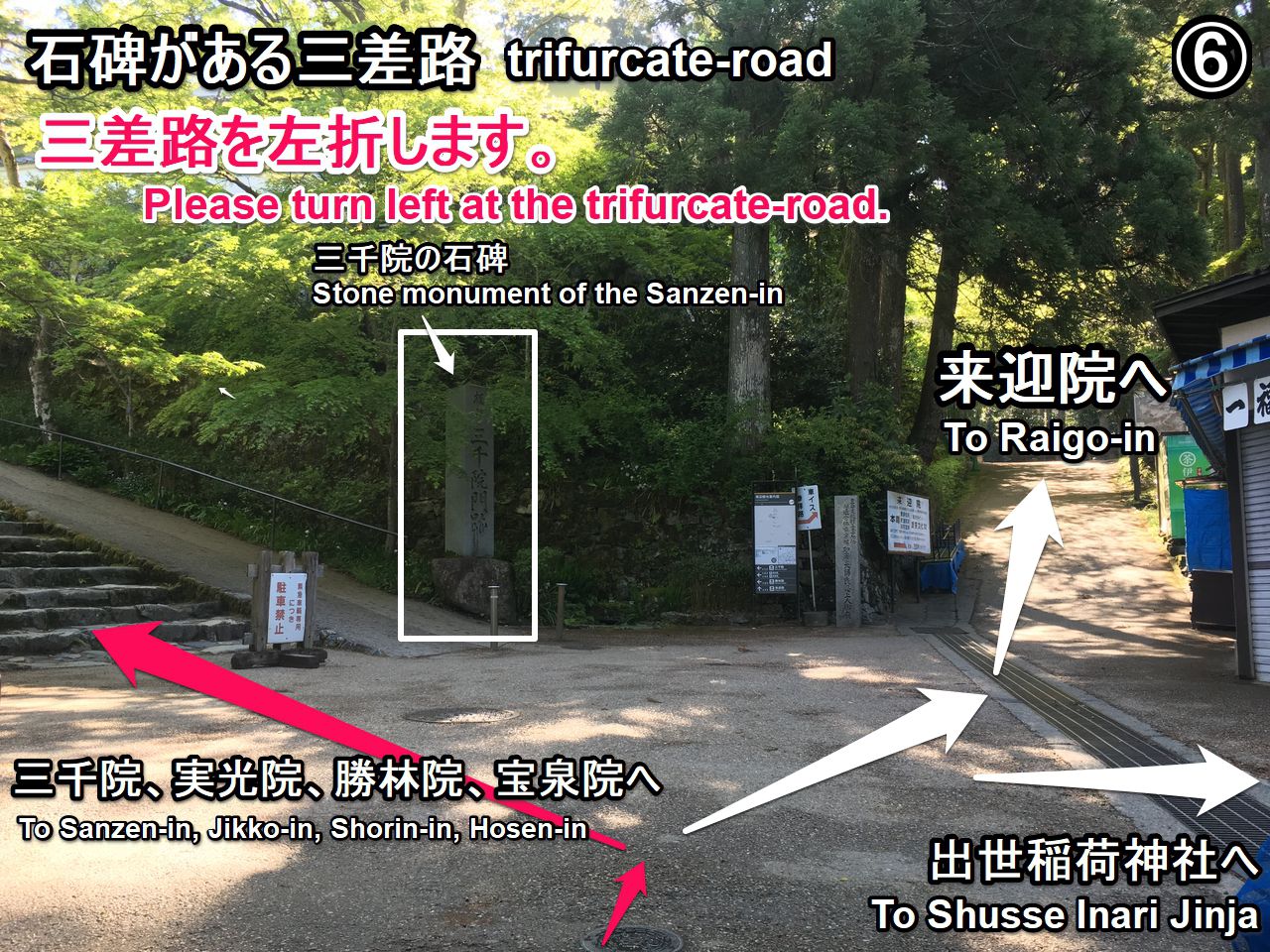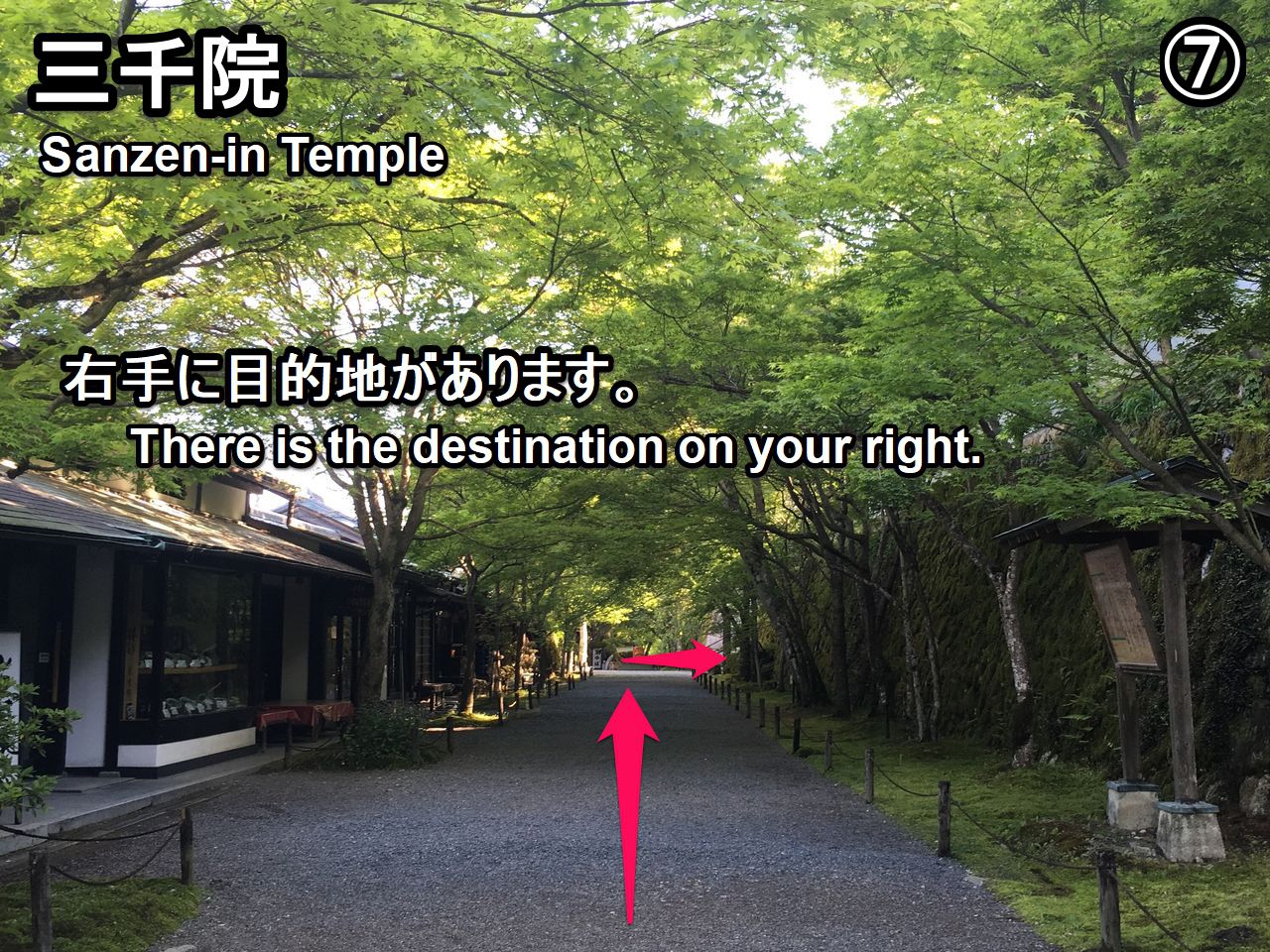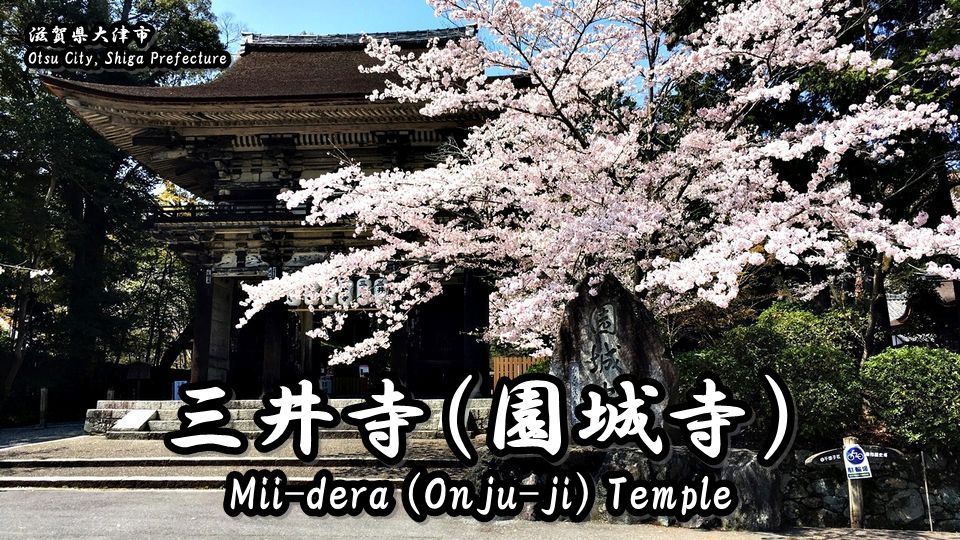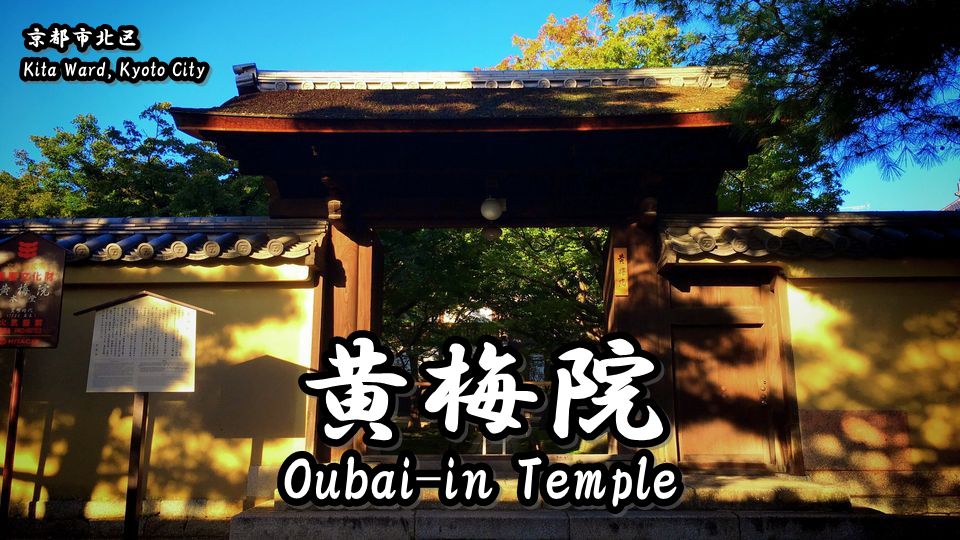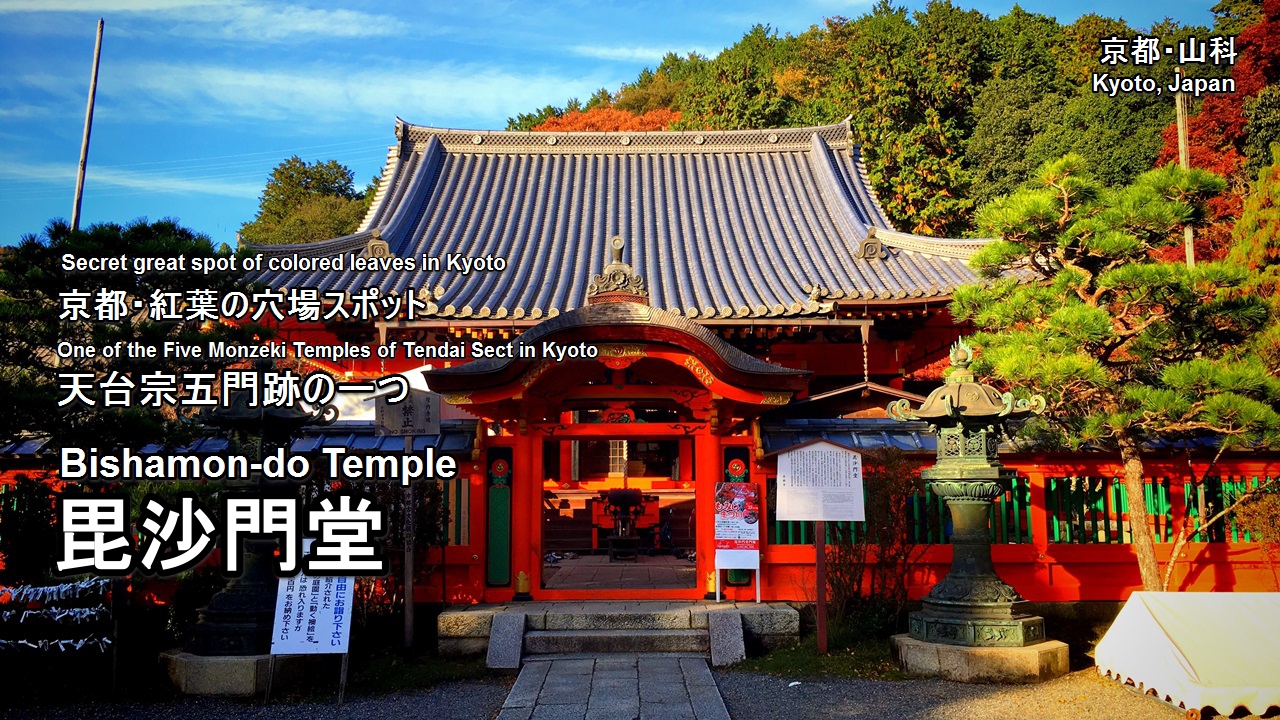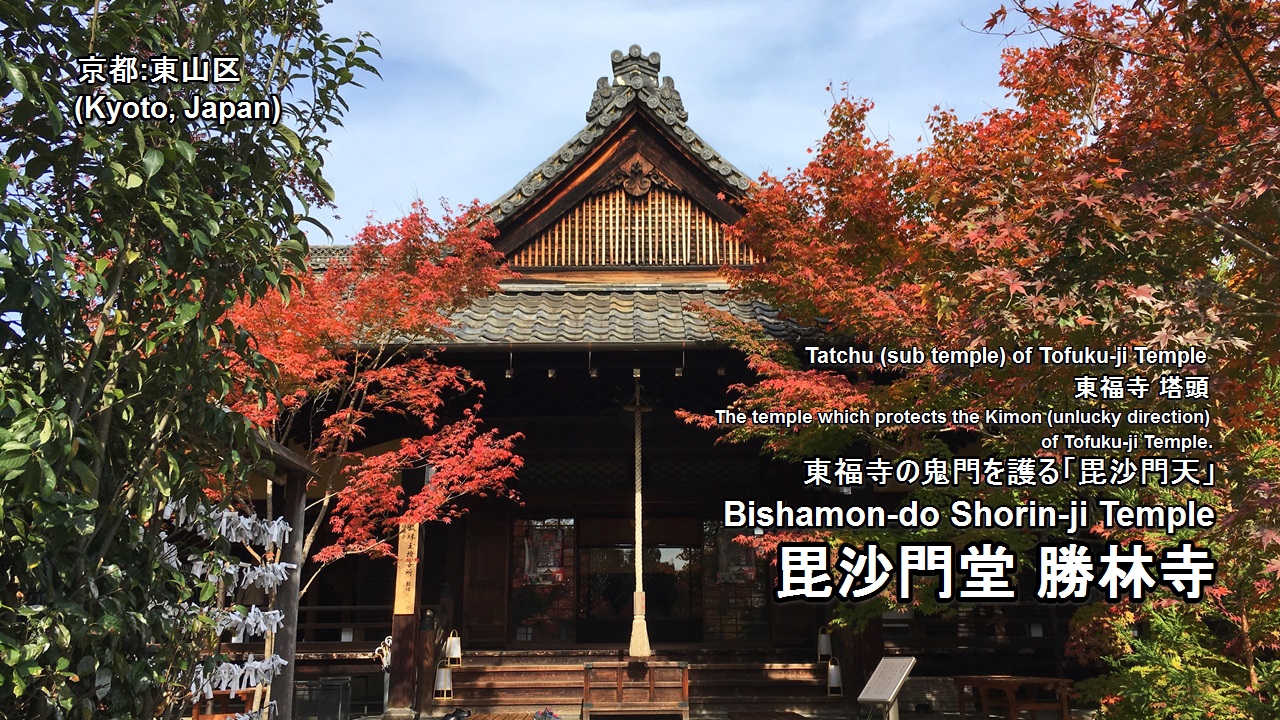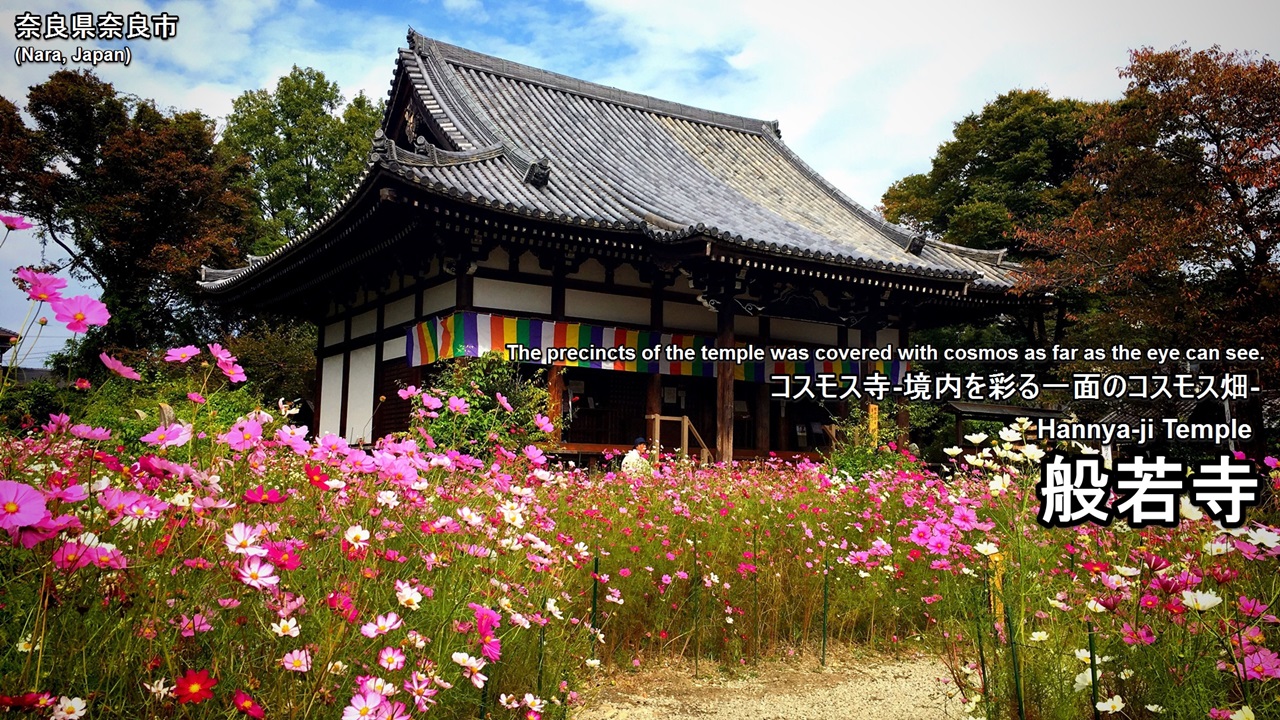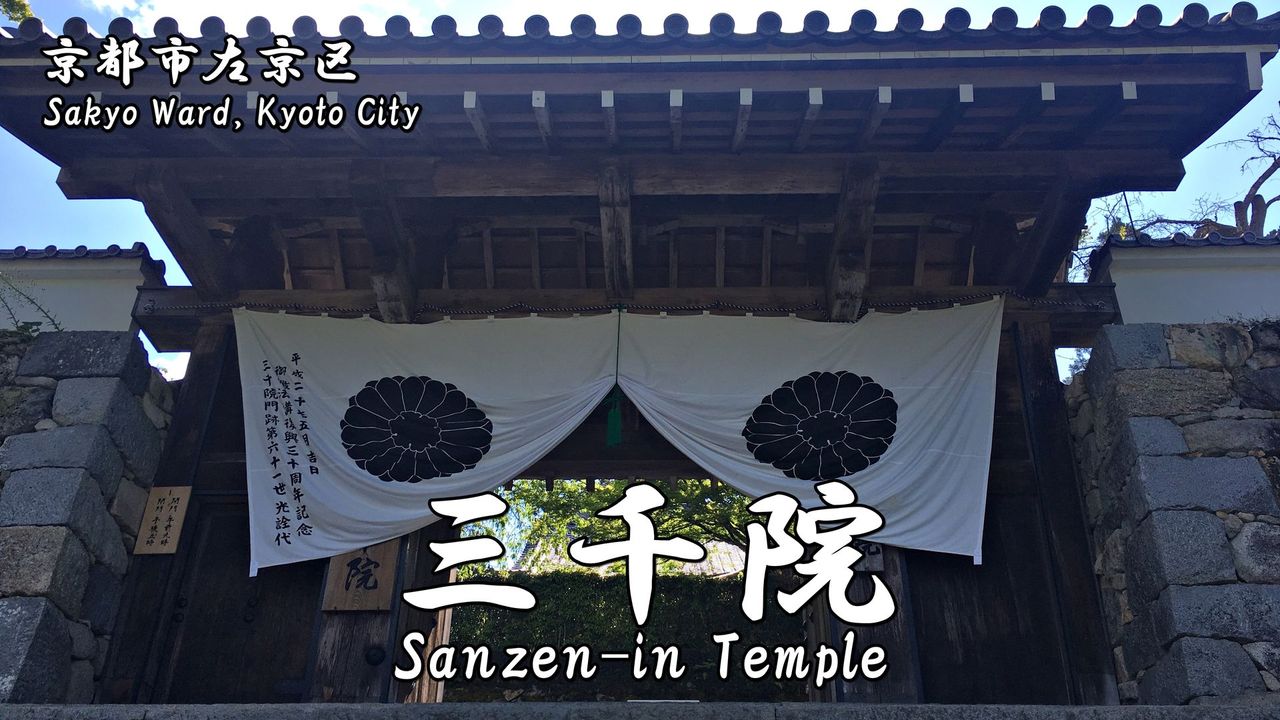
Sanzen-in Temple is a Tendai Sect Buddhist temple located in Sakyo Ward, Kyoto City, also known as ‘Sanzen-in Monzeki Temple.’
It is one of the three Monzeki temples of Tendai sect along with Shoren-in Temple (青蓮院) and Myoho-in Temple (妙法院).
The principal image (honzon) is Yakushi Nyorai.
Amida Sanzon (Amida Triad), designated as a National Treasure, is enshrined in the Ojo Gokuraku-in Hall of this temple.
It is famous for its beautiful green leaves, moss (early summer), and autumn leaves (autumn).
History of Sanzen-in
Let’s study the history of this temple with me.
I think that we can enjoy sightseeing of this temple more by learning the history of it. XD
It is said that Enyu-bo (円融房) which was built in 782-806 of the Heian period by Saicho (Dengyo Daishi) at Mt. Hiei is the origin of the Sanzen-in.
(Enyu-bo was priests’ living quarters.)
The name of this temple ‘Sanzen-in’ was based on the name of the Kajii Monzeki Temple’s Hon-do hall called ‘Ichinen Sanzen-in’.
In 1118, Imperial Prince Saiunho who was one of the Emperor Horikawa’s son, joined the temple’s priesthood.
For this reason Sanzen-in Temple became the monzeki temple.
The temple’s building was destroyed by fire during the Onin War (応仁の乱) but was rebuilt in 1871 of the Meiji period.
Information for visitors
Website
Information
Address:540, Ohara Raikoincho, Kyoto Shi Sakyo Ku, Kyoto Fu, 601-1242, Japan
Phone:+81-75-744-2531
Foundation:during 782 – 806
Founder:Saicho (最澄)
Sect:Tendai Sect (天台宗)
Principal image:Yakushi Nyorai (薬師如来)
Open
| Month | Open |
| March – October | 9:00 – 17:00 |
| November | 8:30 – 17:00 |
| December – February | 9:00 – 16:30 |
Admission Fee
| Adults | High and junior high school students | Elementary school students |
| 700 yen | 400 yen | 150 yen |
Other Informations
Inside the building, there are places where photography is prohibited. (Please follow the official’s instructions.)
The worship method of a shinto shrine and a buddhist temple, please refer to the following article.
Next, let’s go to see the highlights of this temple with me!
Highlights of Sanzen-in
- 御殿門:Goten-mon gate
- 庫裏*:Kuri*
- 中書院*:Chu Sho-in hall*
- 客殿*:Kyaku-den hall*
- 聚碧園*:Shuheki-en garden*
- 宸殿*:Shin-den hall*
- 有清園*:Yusei-en garden*
- 往生極楽院【重要文化財】*:Ojo Gokuraku-in hall【Important cultural property】*
- 朱雀門*:Suzaku-mon gate*
- わらべ地蔵*:Warabe Jizo Bosatsu*
- 弁財天*:Benzaiten*
- 金色不動堂*:Konjiki Fudo-do hall*
- 観音堂*:Kannon-do hall*
- 慈眼の庭*:Jigan-no-niwa garden*
- 阿弥陀石仏*:Stone Amida Statue*
- おさな六地蔵*:Osana Roku Jizo Bosatsu*
- 円融蔵*:Ennyu-zo hall*
- 法華堂:Hokke-do hall
- 大原陵:Ohara-no-Misasagi
- 勝手神社:Katte Jinja Shrine
This mark 「*」 is a pay area.
御殿門:Goten-mon gate
Goten-mon gate has the role of an entrance to the precincts of this temple.
The Japanese imperial crest that is in a shape of a chrysanthemum is put up.
庫裏*:Kuri*
We need to pay an entrance fee ahead of here.
中書院*:Chu Sho-in hall*
This is the courtyard of the Chu Sho-in hall.
The appearance of the Chu Sho-in hall.
客殿*:Kyaku-den hall*
The great hall of the Kyaku-den hall.
The appearance of the Kyaku-den hall.
聚碧園*:Shuheki-en garden*
Shuheki-en garden is known for the chisen-kanshoshiki-teien garden (pond appreciation style garden) designed in the Edo period.
It was designed by Shigechika KANAMORI (金森重近) who was one of the master of tea ceremony of the Edo period.
宸殿*:Shin-den hall*
Shin-den hall was built in 1926 of the Taisho period.
The principal image of Yakushi Nyorai (ordinarily withheld from public view) is enshrined.
有清園*:Yusei-en garden*
Yusei-en garden is also known for the chisen-kanshoshiki-teien garden (pond appreciation style garden), the garden overgrown with moss.
It is famous for its beautiful green leaves, moss (early summer), and autumn leaves (autumn).
往生極楽院【重要文化財】*:Ojo Gokuraku-in hall【Important cultural property】*
This building was built during the Heian period, and is designated as an important cultural property.
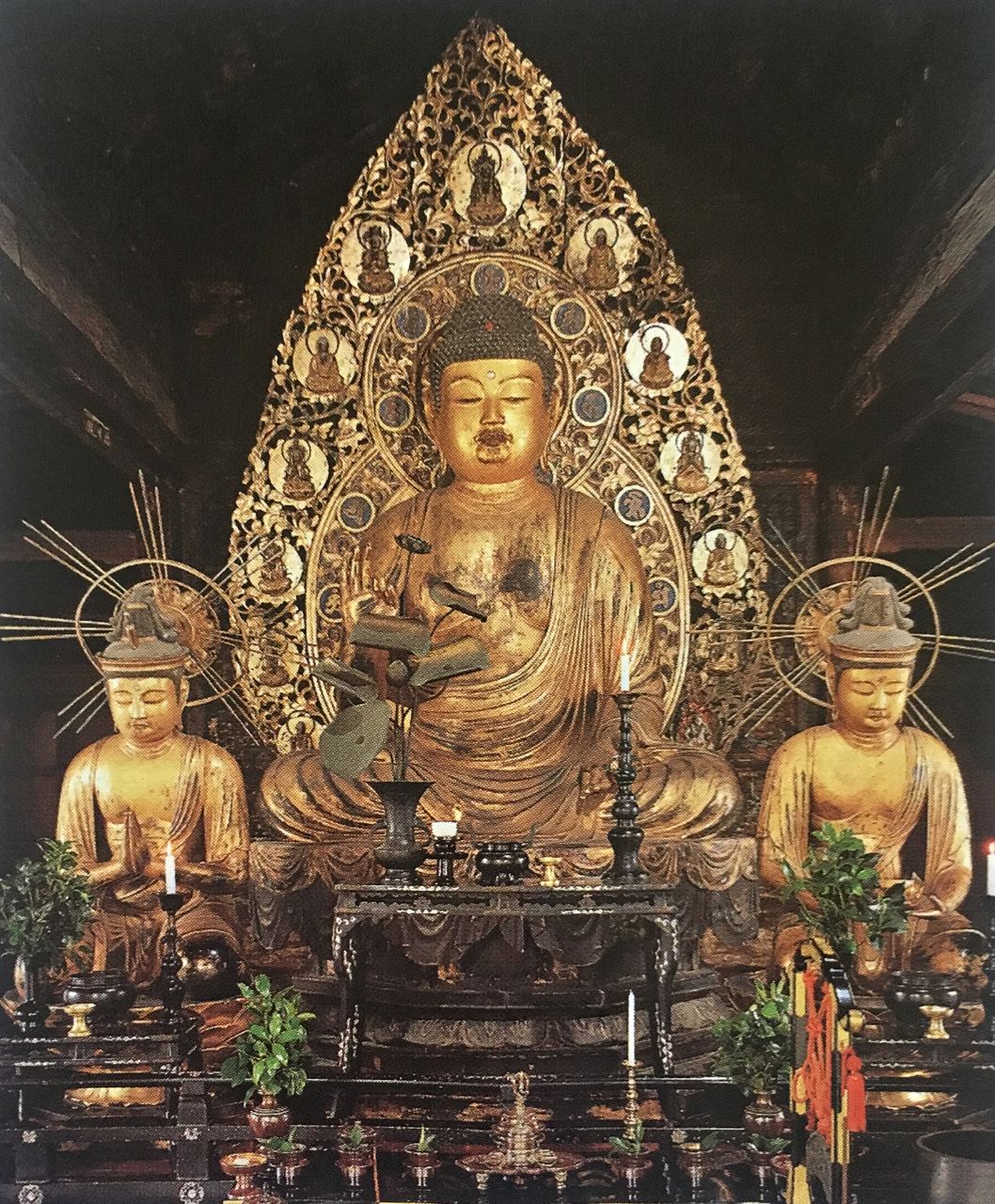
Amida Sanzon (Amida Triad), designated as a National Treasure, is enshrined in the building.
朱雀門*:Suzaku-mon gate*
Suzaku (Shucho) is one of the divine beasts, protects against threats from the south.
わらべ地蔵*:Warabe Jizo Bosatsu*
‘Warabe’ has the meaning of ‘children’.
Because Jizo Bosatsu (Jizo Bodhisattva) protects a child mainly, it is also called ‘Guardian deity of children’.
弁財天*:Benzaiten*
Benzaiten (Sarasvati) is one of the Seven Deities of Good Fortune of Japanese mythology.
金色不動堂*:Konjiki Fudo-do hall*
Konjiki Fudo-do hall was built in 1989 of the Heisei period.
Konjiki Fudomyoo (ordinarily withheld from public view) is enshrined.
観音堂*:Kannon-do hall*
Sho Kannon is enshrined.
慈眼の庭*:Jigan-no-niwa garden*
Jigan-no-niwa garden is known for the dry landscape garden, a hill-and stream garden landscape without water.
阿弥陀石仏*:Stone Amida Statue*
This stone statue was made during the Kamakura period.
おさな六地蔵*:Osana Roku Jizo Bosatsu*
‘Osana’ has the meaning of ‘children’.
Because Jizo Bosatsu (Jizo Bodhisattva) protects a child mainly, it is also called ‘Guardian deity of children’.
円融蔵*:Ennyu-zo hall*
It has the role of a museum in this temple.
法華堂:Hokke-do hall
大原陵:Ohara-no-Misasagi
‘Misasagi’ has the meaning of ‘Emperor’s grave’.
This is a grave of the Emperor Gotoba (後鳥羽天皇) and the Emperor Juntoku (順徳天皇).
勝手神社:Katte Jinja Shrine
Katte Jinja shrine enshrines the deity associated with the local area.
It was built in 1125 of the Heian period by Ryonin (良忍) who was the sect founder of the Yuzu-Nenbutsu sect.
Autumn leaves of Sanzen-in
Sanzen-in is also famous for its autumn leaves.
The best season of autumn leaves is late November to early December.
Video of Sanzen-in
Photos of Sanzen-in
Goshuin (Red ink stamps) of Sanzen-in
Sanzen-in’s red ink stamp (goshuin), ‘Honzon Yakushi Nyorai (本尊 薬師如来).’
Sanzen-in’s red ink stamp (goshuin), ‘Mida Sanzon (弥陀三尊).’
How to get to Sanzen-in
The nearest station is Kyoto Bus Ohara bus stop.
It is about 15 minutes on foot from Ohara bus stop.
We recommend that you go to Kokusaikaikan Station by a train, and get on a bus from Kokusaikaikan Station.
From Osaka Sta. to Kokusaikaikan Sta. (by train)
Timetable and Route Search (train)
1.Get on the JR Kyoto Line from Osaka Station to Kyoto Station.
2.Change to the Kyoto City Subway Karasuma Line at Kyoto Station.
3.Get on the Kyoto City Subway Karasuma Line from Kyoto Station to Kokusaikaikan Station.
From Namba Sta. to Kokusaikaikan Sta. (by train)
Timetable and Route Search (train)
1.Get on the Osaka Metro Midosuji Line from Namba Station to Umeda (Osaka) Station.
2.Get on the JR Kyoto Line from Osaka Station to Kyoto Station.
3.Change to the Kyoto City Subway Karasuma Line at Kyoto Station.
4.Get on the Kyoto City Subway Karasuma Line from Kyoto Station to Kokusaikaikan Station.
From Namba Sta. to Kokusaikaikan Sta. (by train)
Timetable and Route Search (train)
1.Get on the Kyoto City Subway Karasuma Line from Kyoto Station to Kokusaikaikan Station.
Get on a bus from Kokusaikaikan Station
Timetable and Route Search (bus)
Please get on a bus No.19 (bus stop 3).
[Timetable] Kyoto Bus No. 19
Bus company:Kyoto Bus
Routes/Destination:No.19 [Bound for Ohara・Kodeishi]
Boarding bus stop:Kokusaikaikan Sta. [3]
Alighting bus stop:Ohara
Bus fare:350 yen
Time required:About 22 min
Get on a bus from Keihan Demachiyanagi Station
Timetable and Route Search (bus)
Please get on a bus No.16 or No.17 (bus stop C).
[Timetable] Kyoto Bus No. 16 / 17
Bus company:Kyoto Bus
Routes/Destination:No.16 /17 [Bound for Ohara]
Boarding bus stop:Demachiyanagi Sta.[C]
Alighting bus stop:Ohara
Bus fare:430 yen
Time required:About 33 min
Get on a bus from Hankyu Kawaramachi Station
Timetable and Route Search (bus)
Please get on a bus No.17 (bus stop ‘To North’).
[Timetable] Kyoto Bus No. 17
Bus company:Kyoto Bus
Routes/Destination:No.17 [Bound for Ohara]
Boarding bus stop:Shijo Kawaramachi [To north]
Alighting bus stop:Ohara
Bus fare:520 yen
Time required:About 52 min
Get on a bus from JR/Subway Kyoto Station
Timetable and Route Search (bus)
Please get on a bus No.17 (bus stop C3).
[Timetable] Kyoto Bus No. 17
Bus company:Kyoto Bus
Routes/Destination:No.17 [Bound for Ohara]
Boarding bus stop:Kyoto Sta. [C3]
Alighting bus stop:Ohara
Bus fare:550 yen
Time required:About 68 min
From Ohara bus stop (on foot)
It is about 15 minutes (600 meters) on foot from Ohara bus stop.
Take a taxi
From Kyoto Station:about 6600 yen (40 minutes)
From Gion-Shijo Station:about 5900 yen (35 minutes)
From Kokusaikaikan Station:about 3500 yen (20 minutes)
・Let’s show a taxi driver the following phrase.
・If you want to call a taxi, let’s show the following phrase.
[Phone number of taxi dispatch : Around the Kyoto Station]*Japanese text only.
Hotel search & reservation
How did you like it?
Have a nice trip! XD

